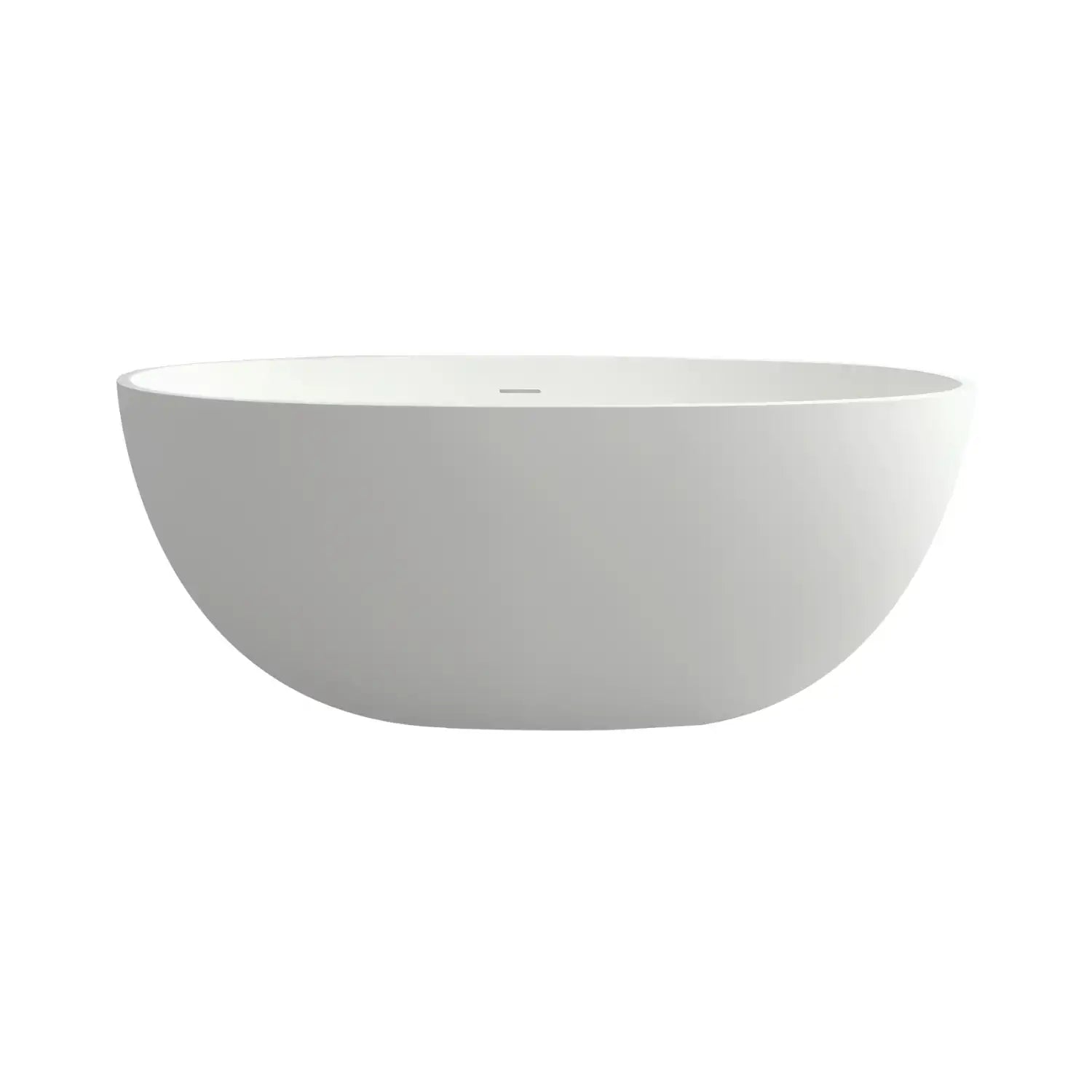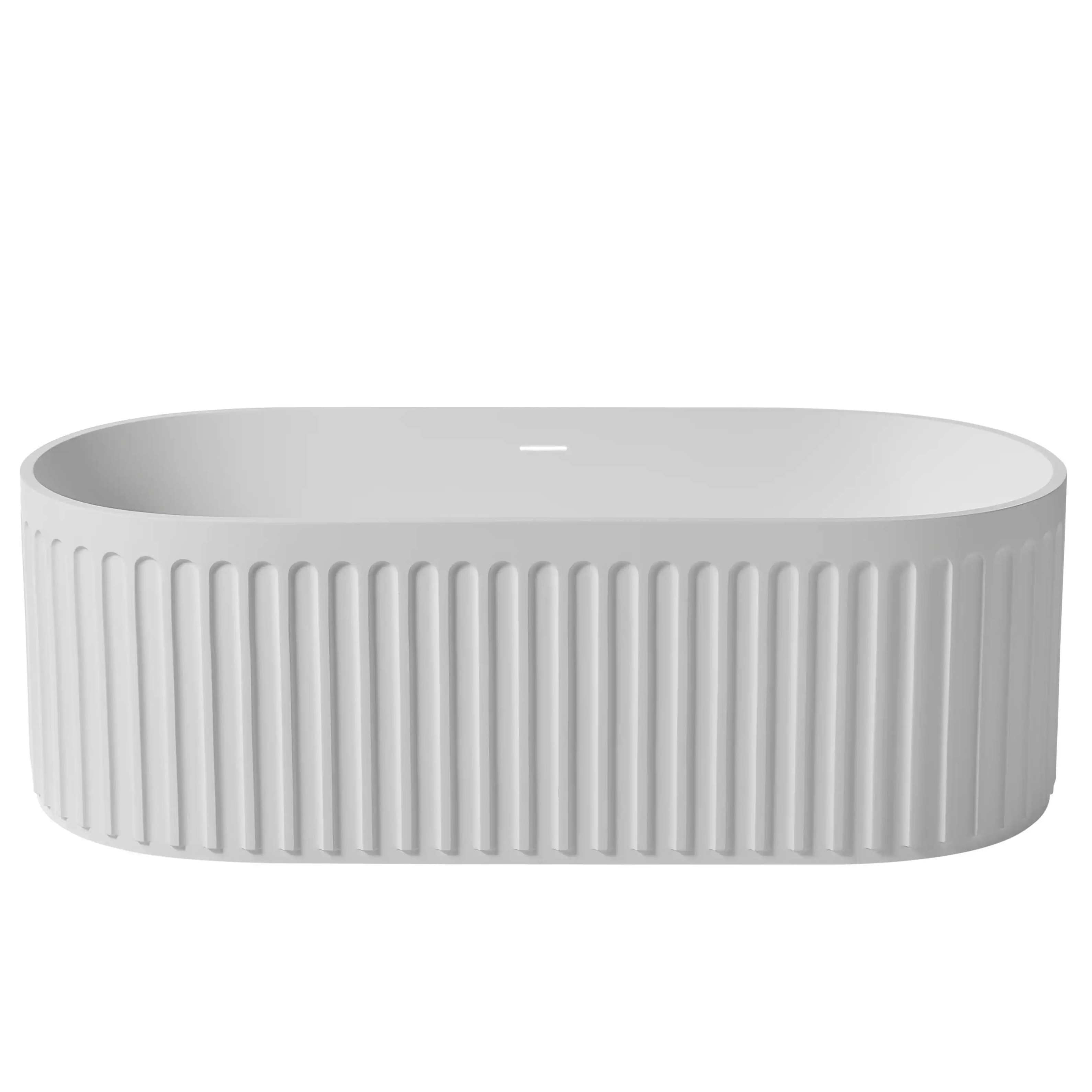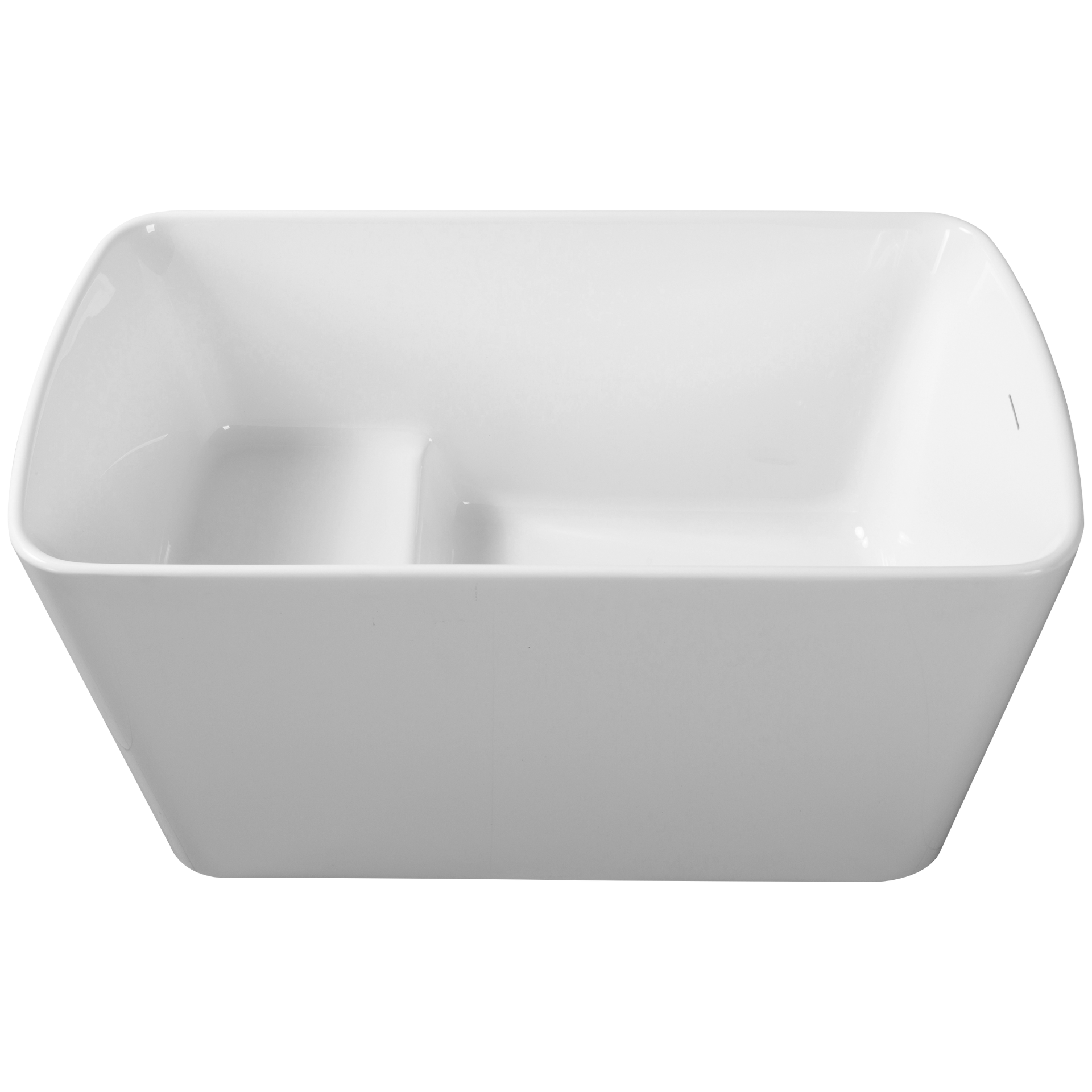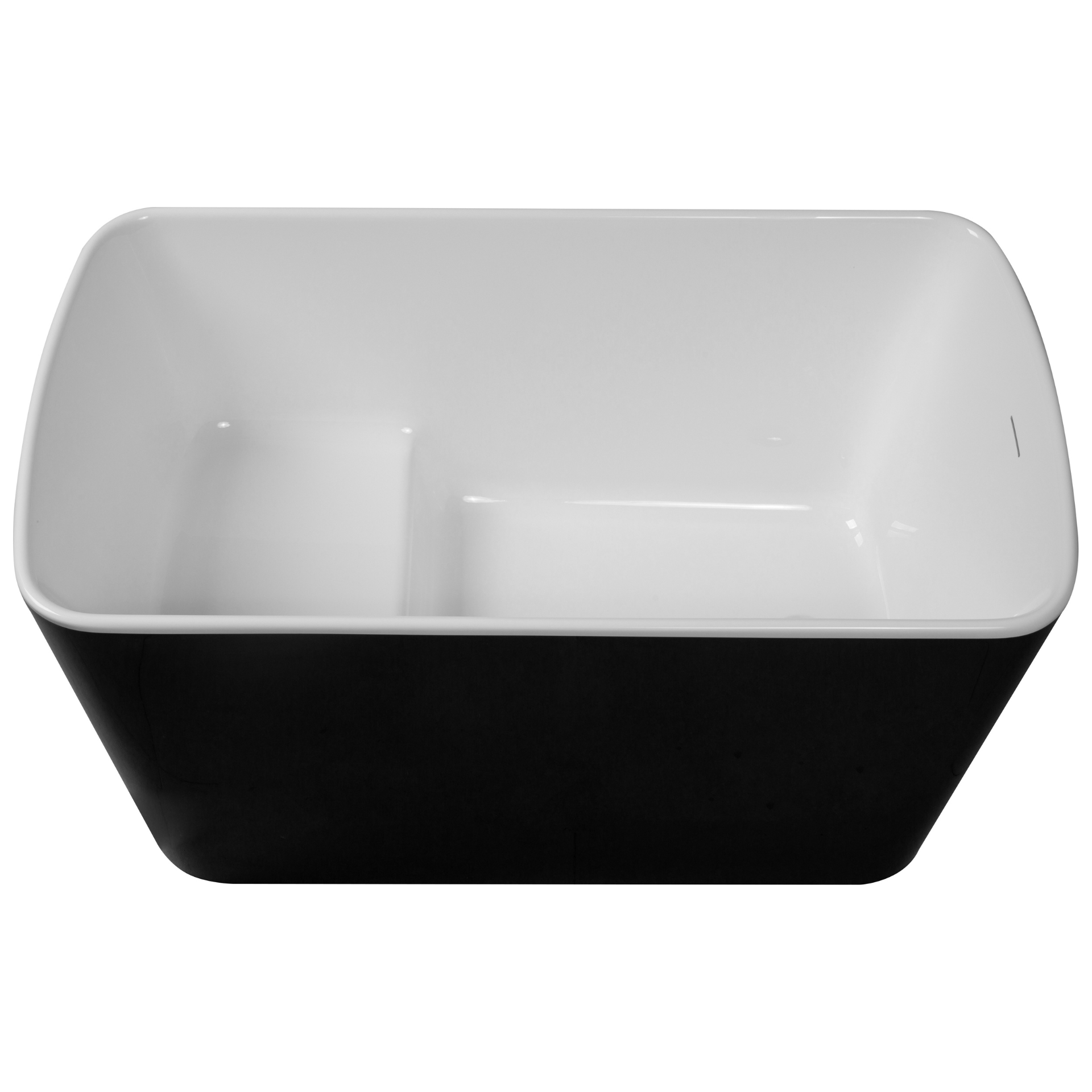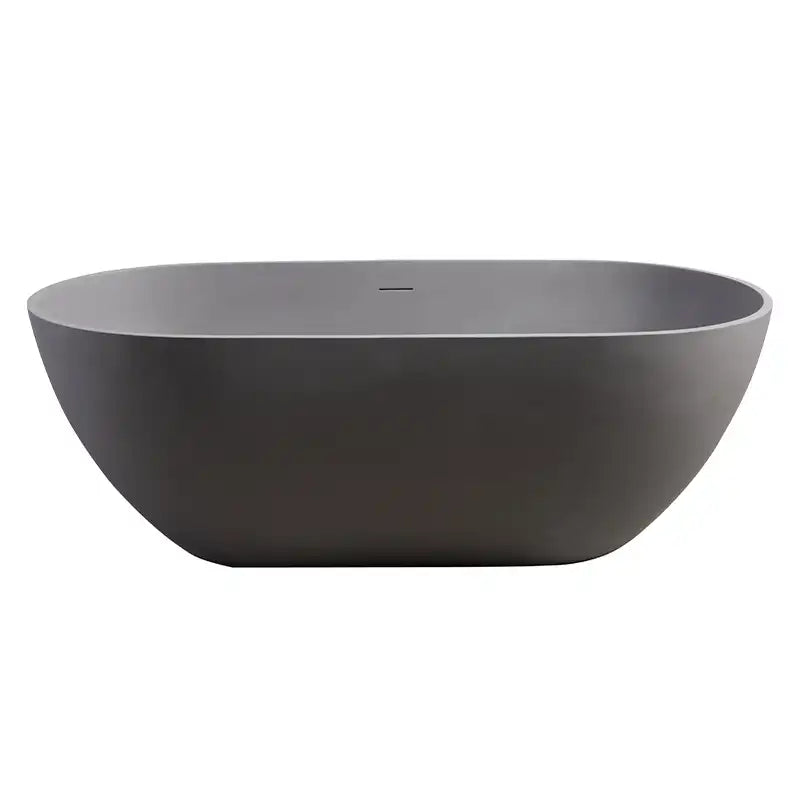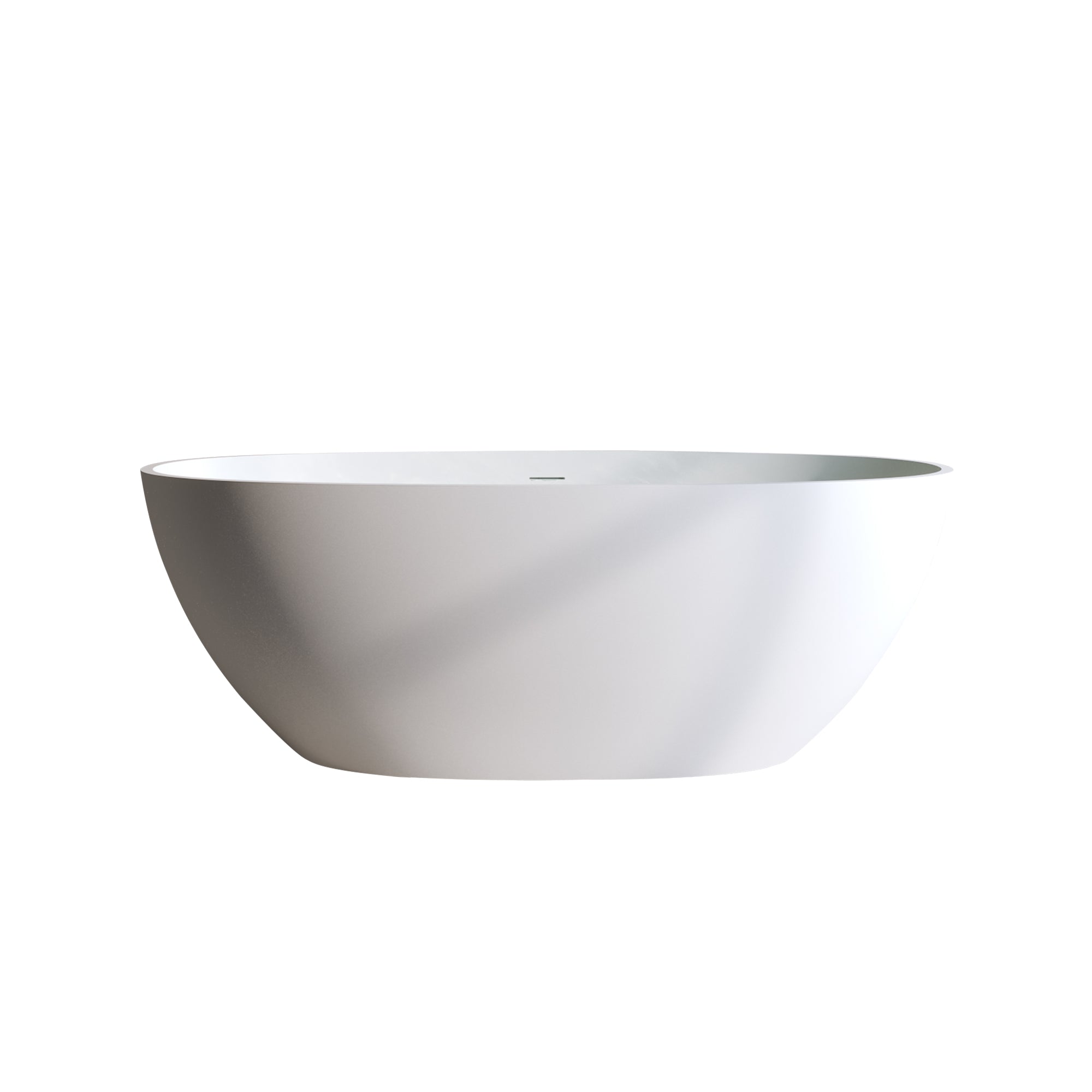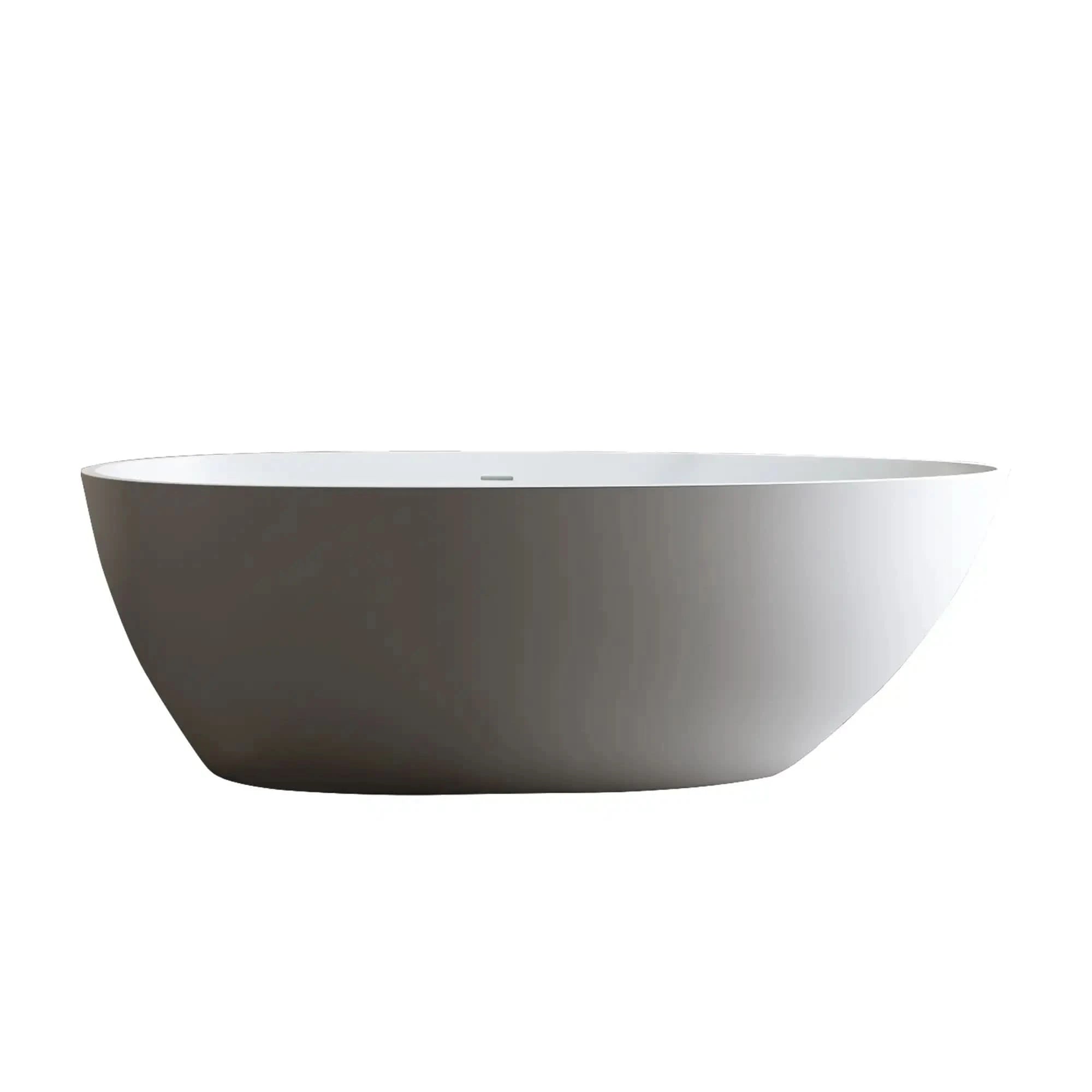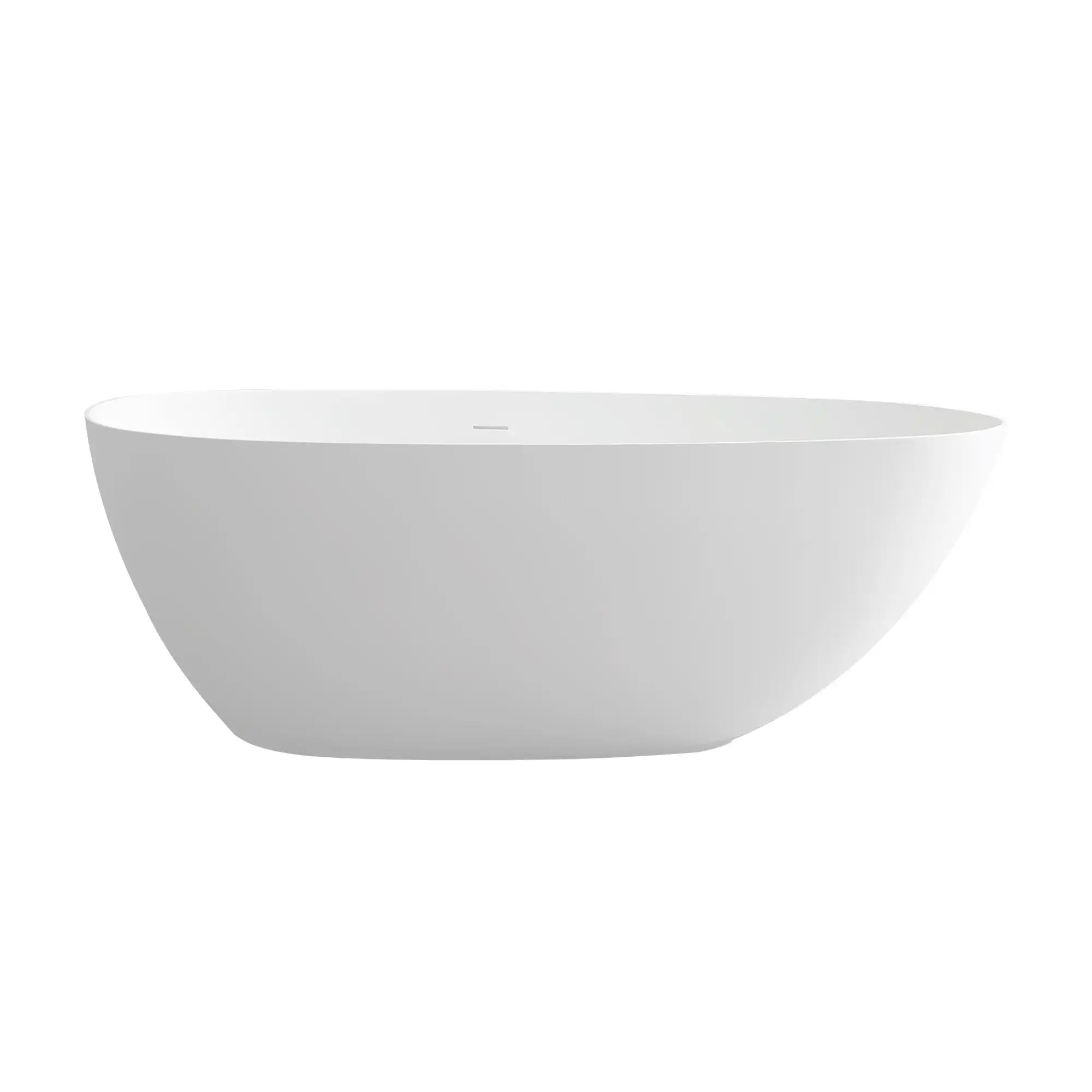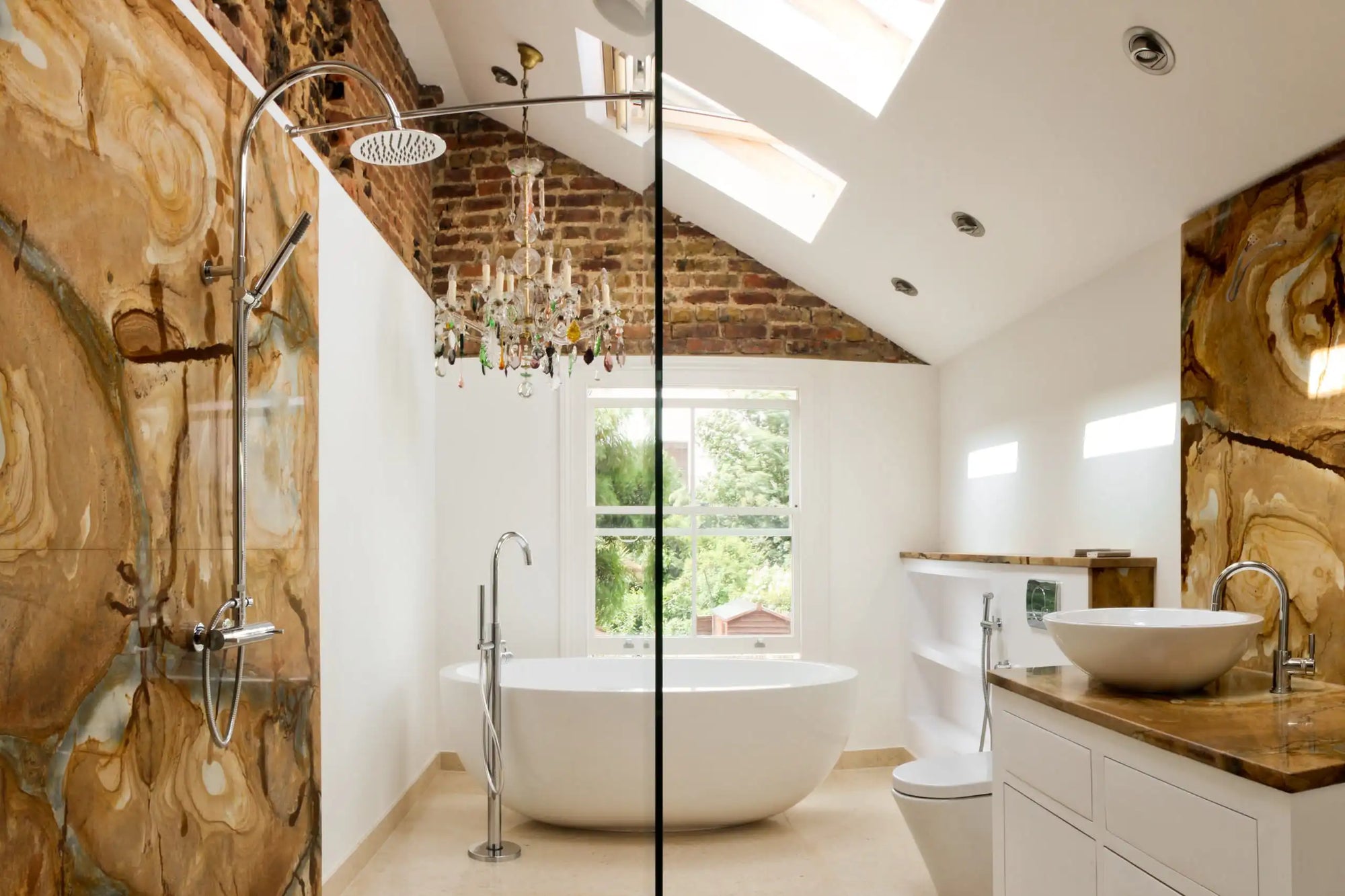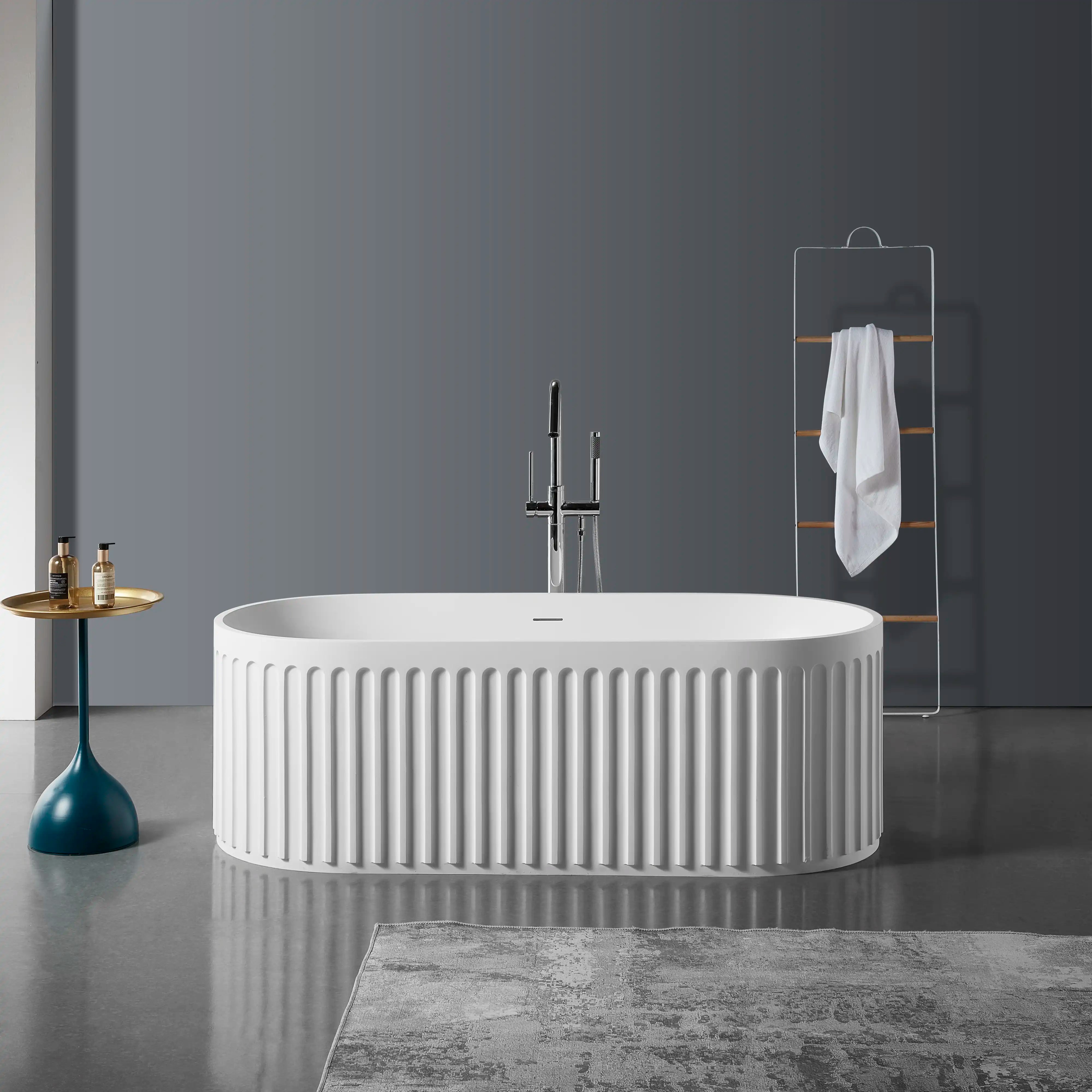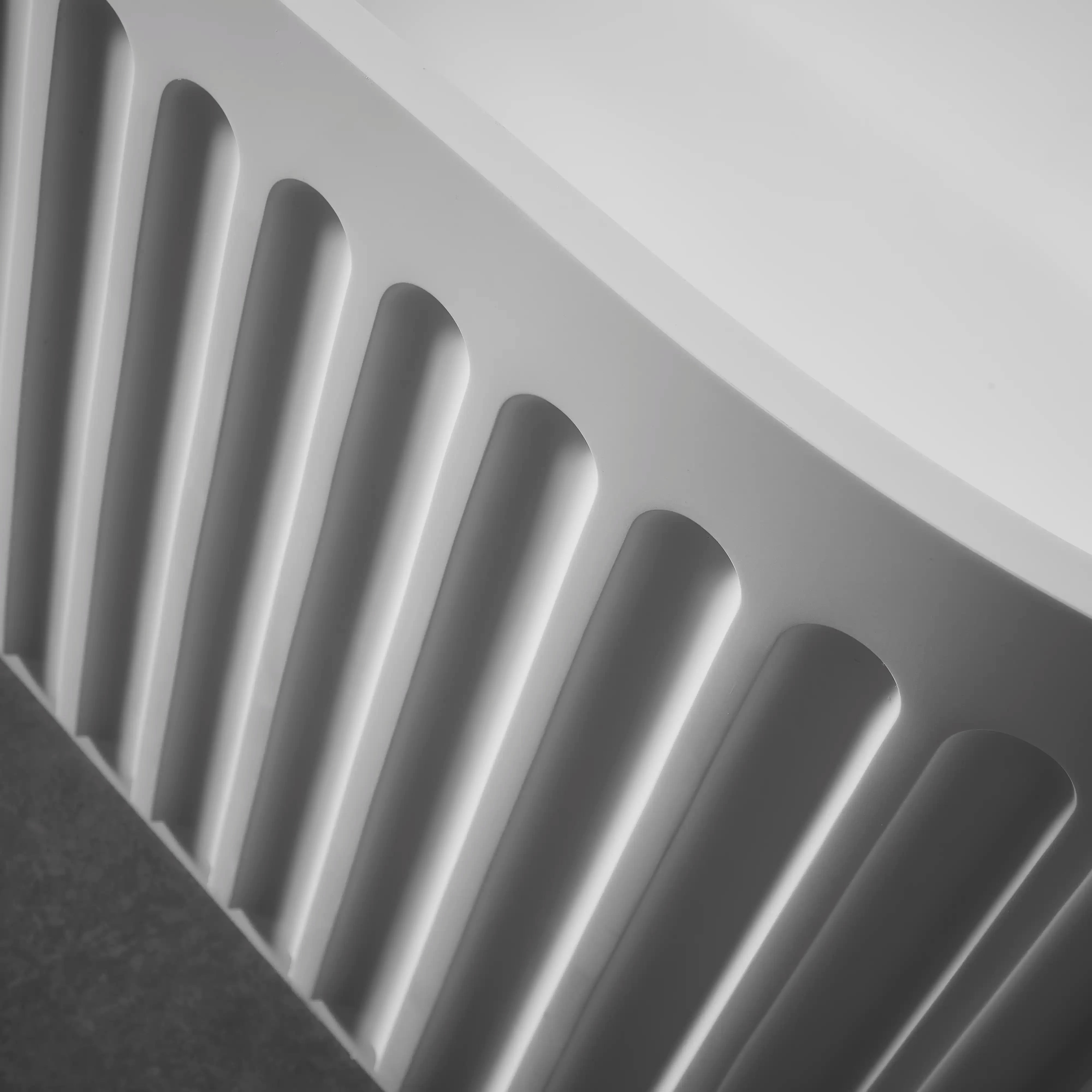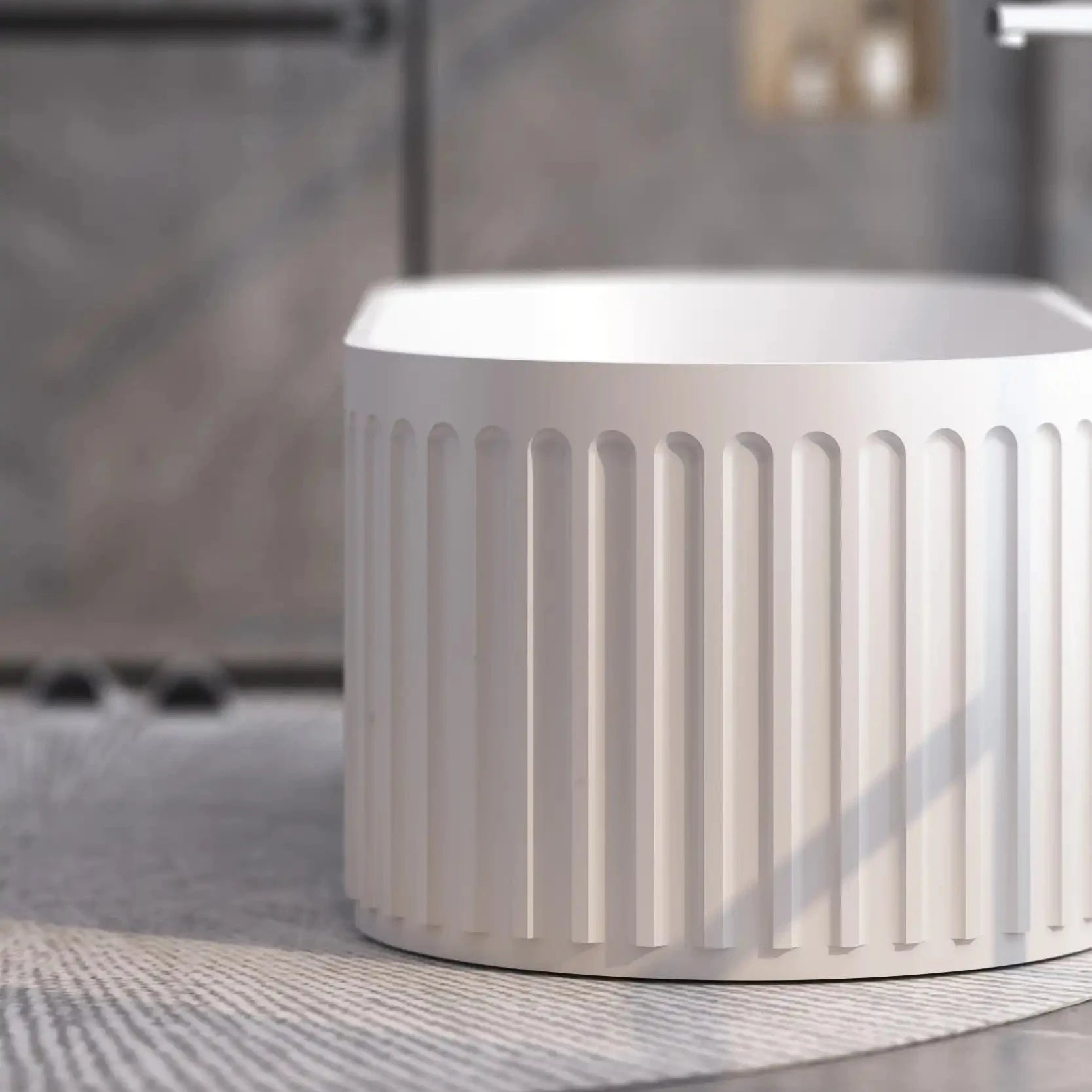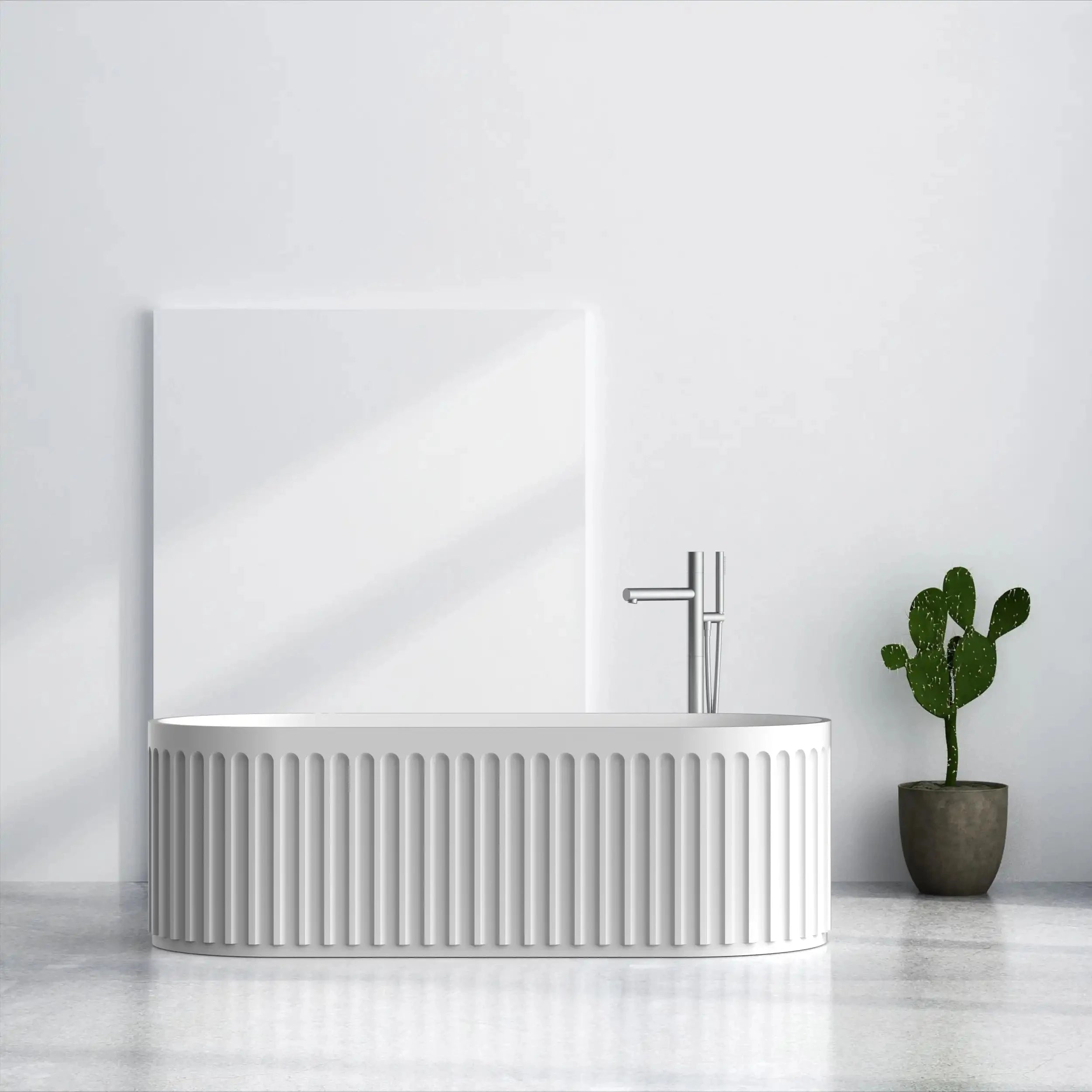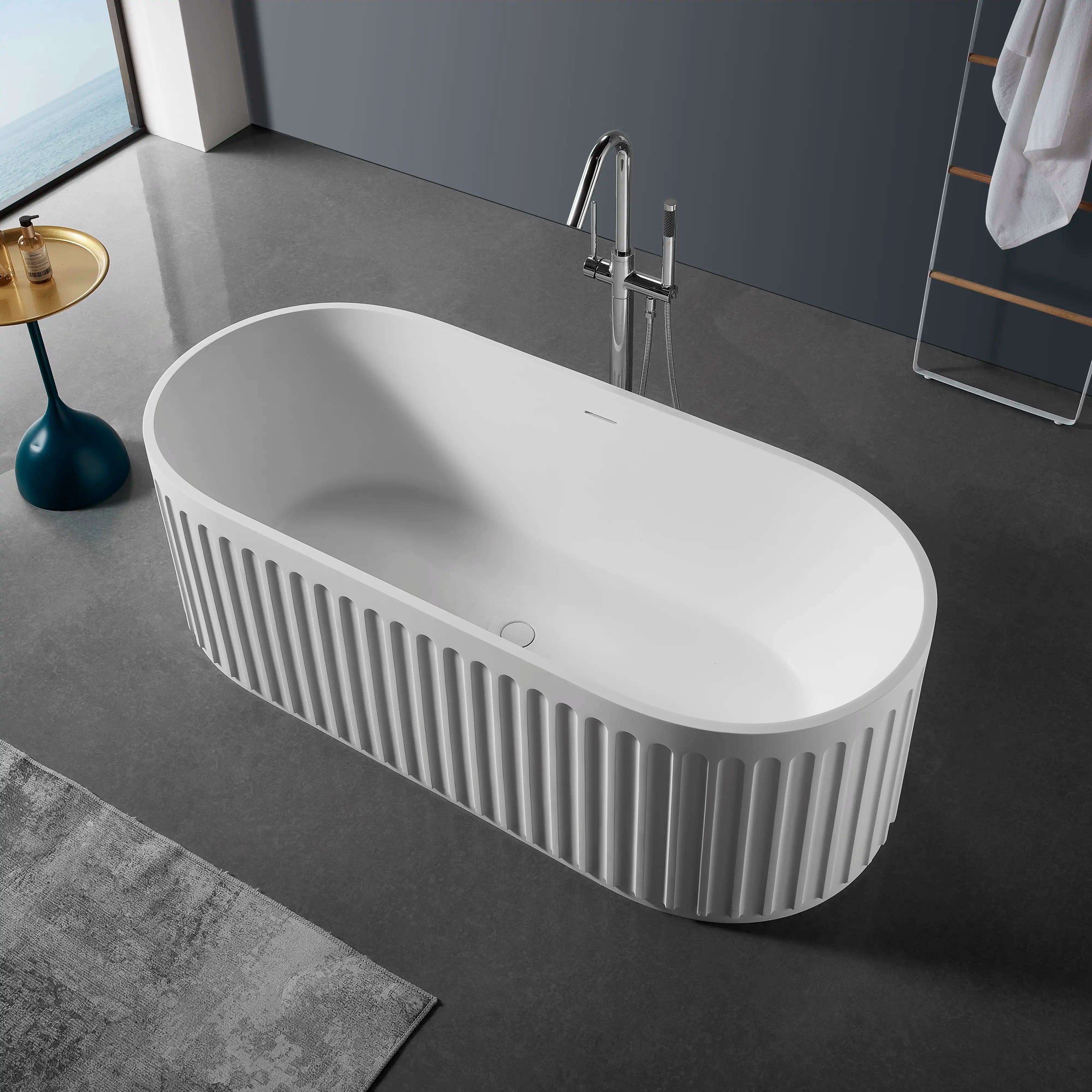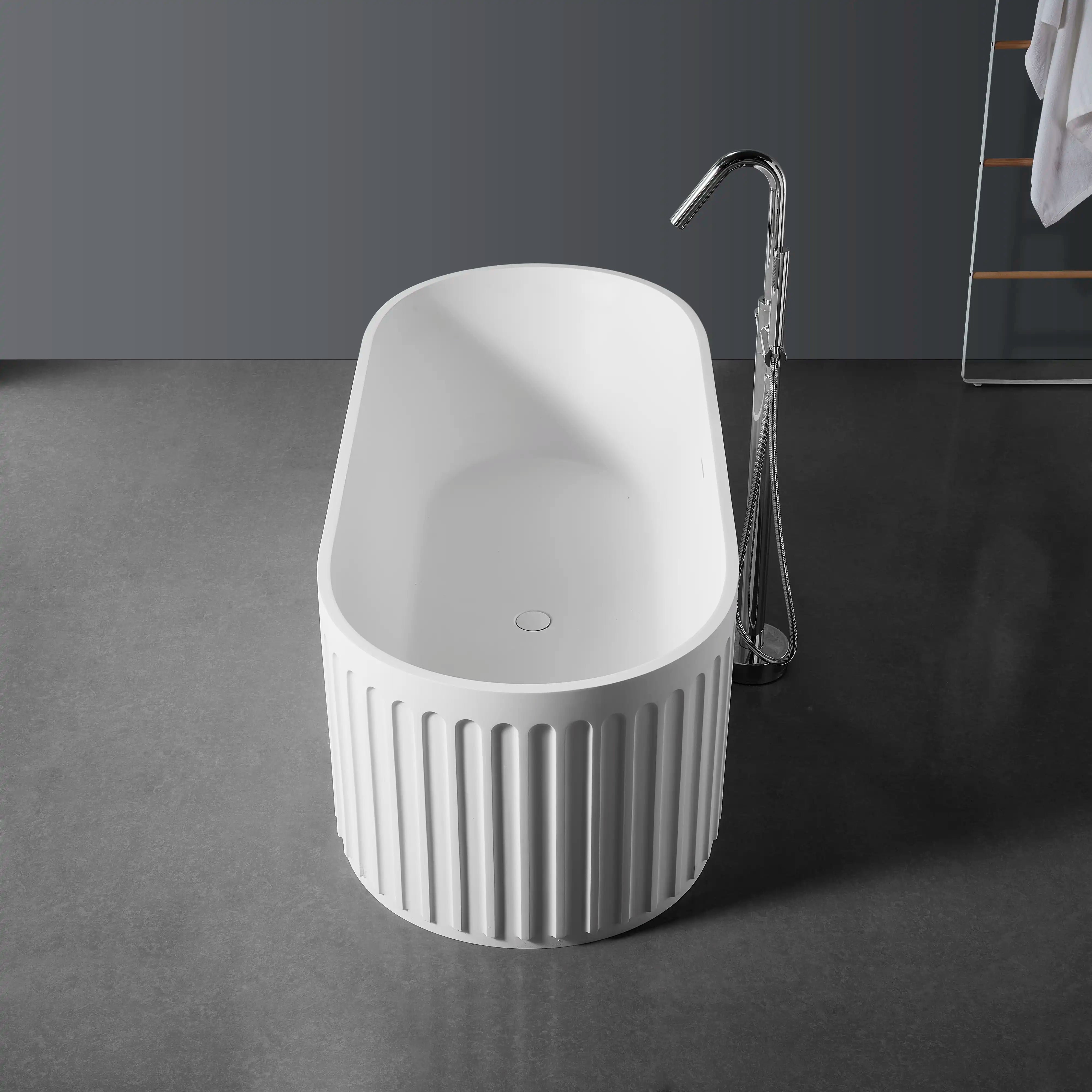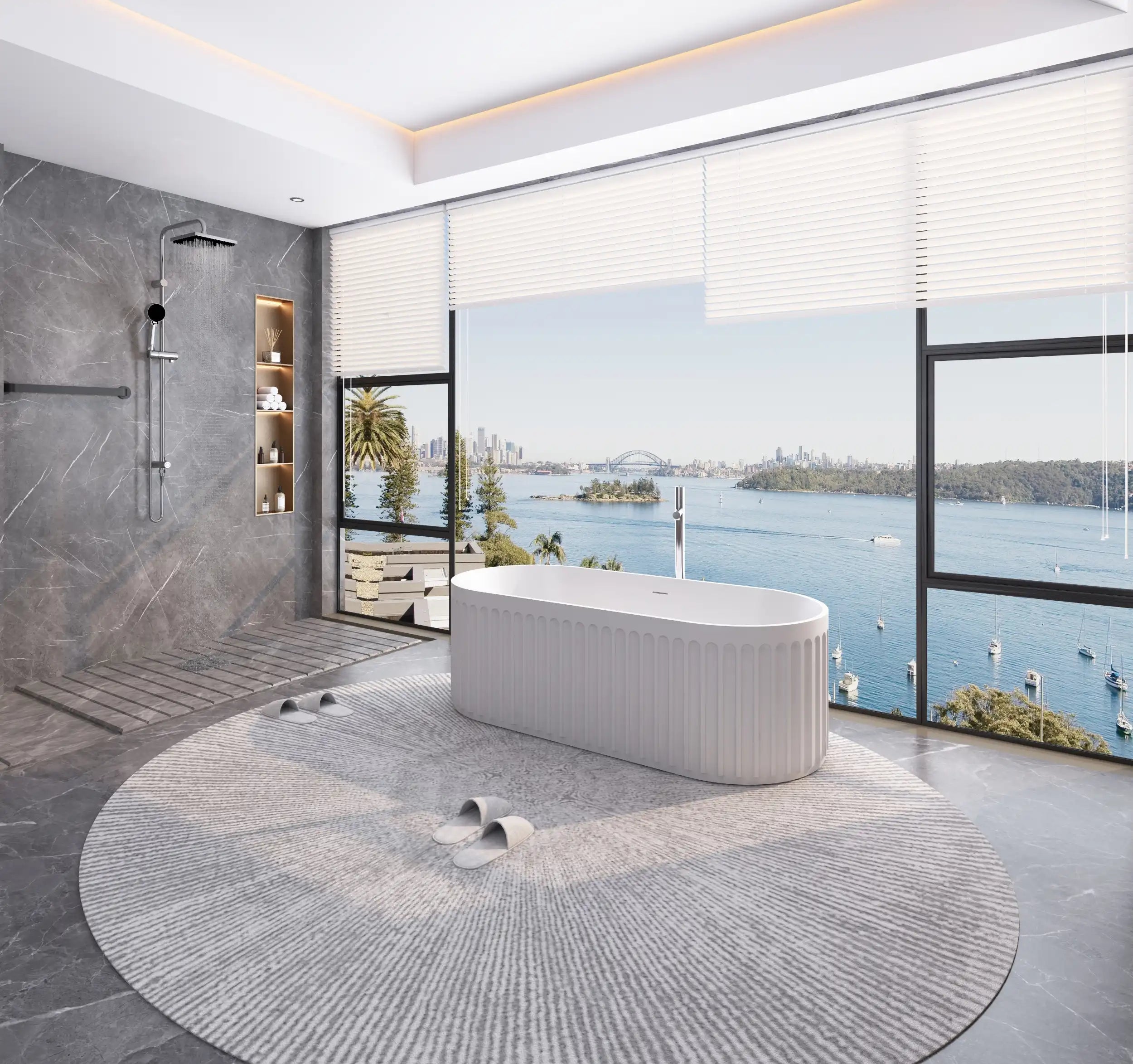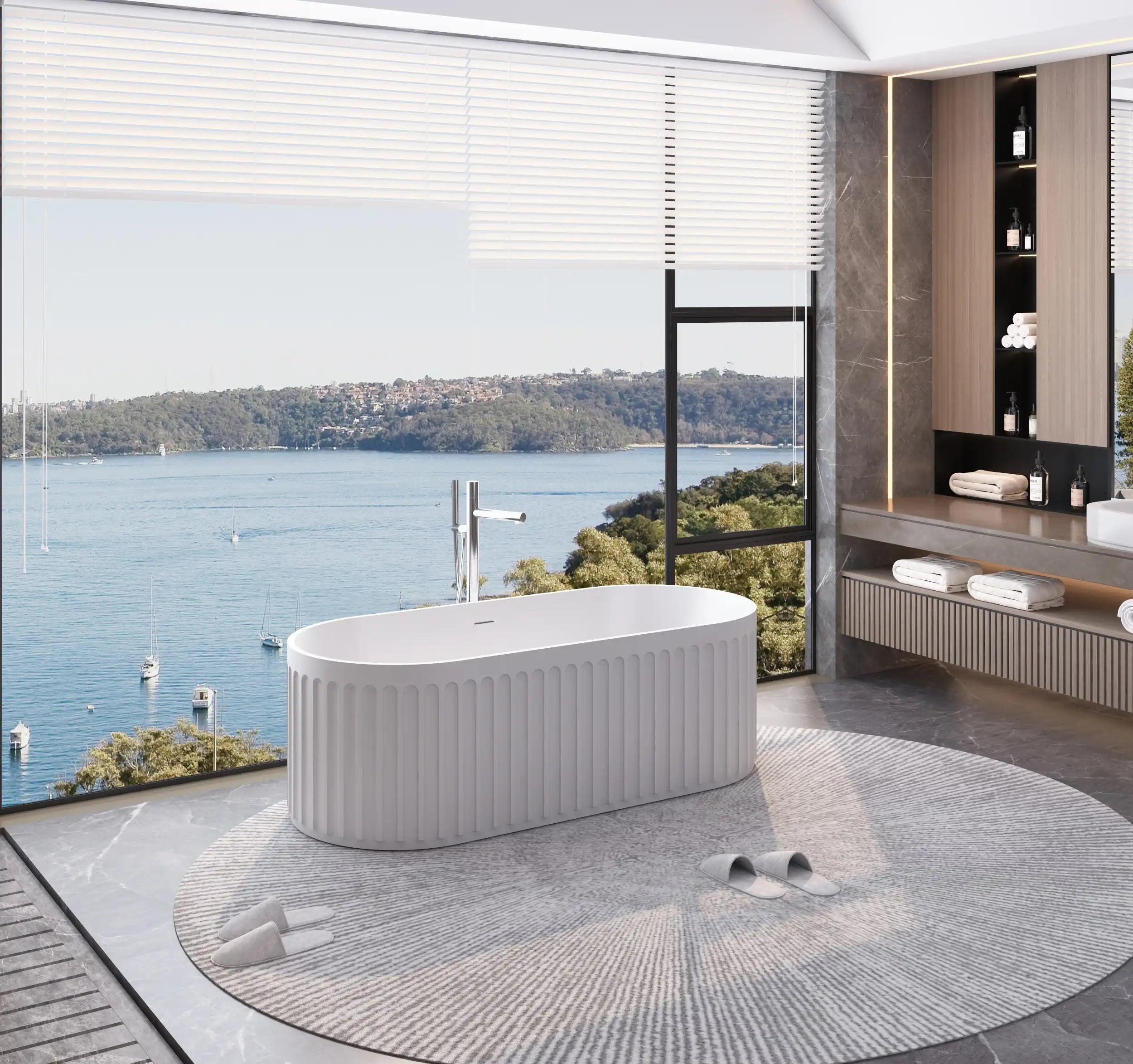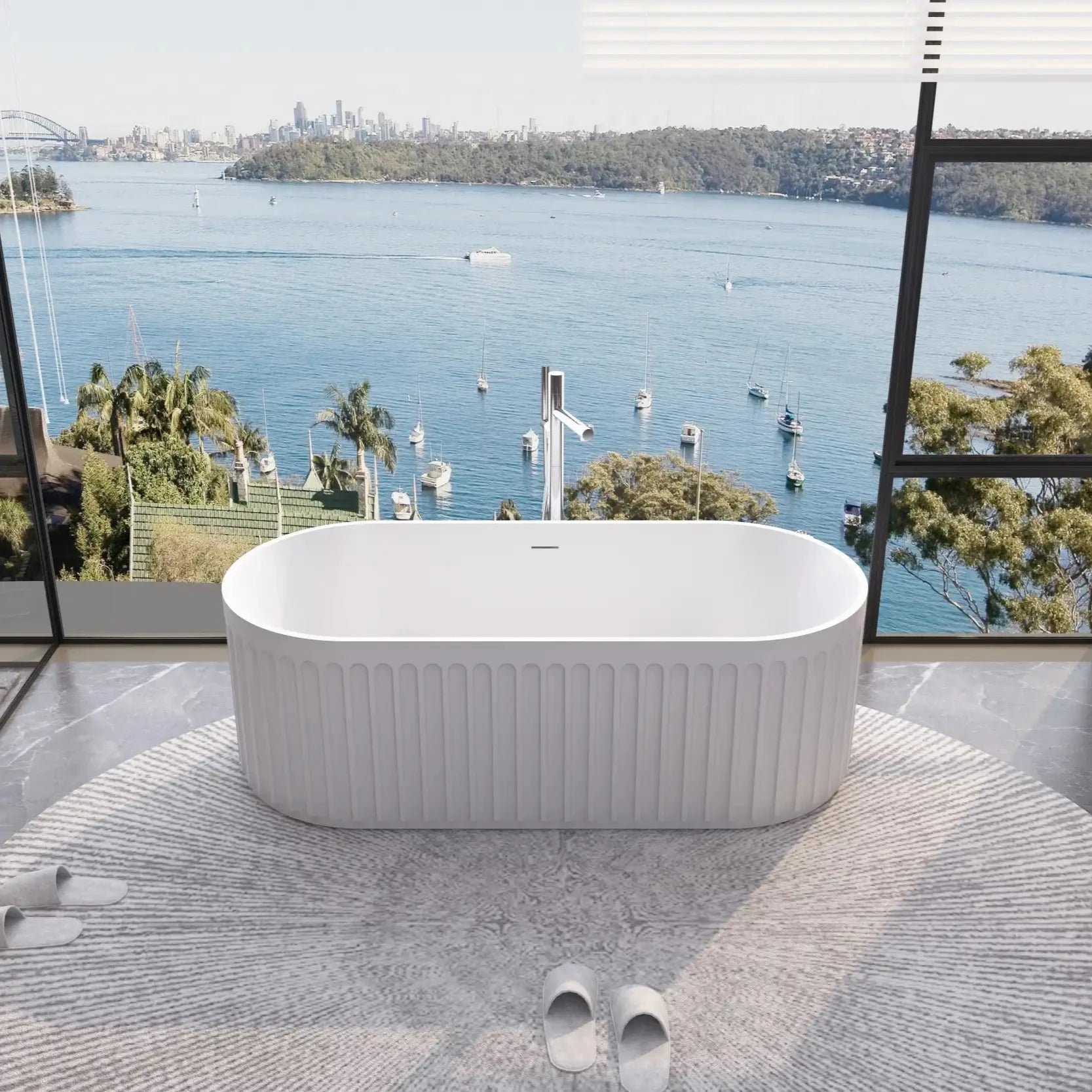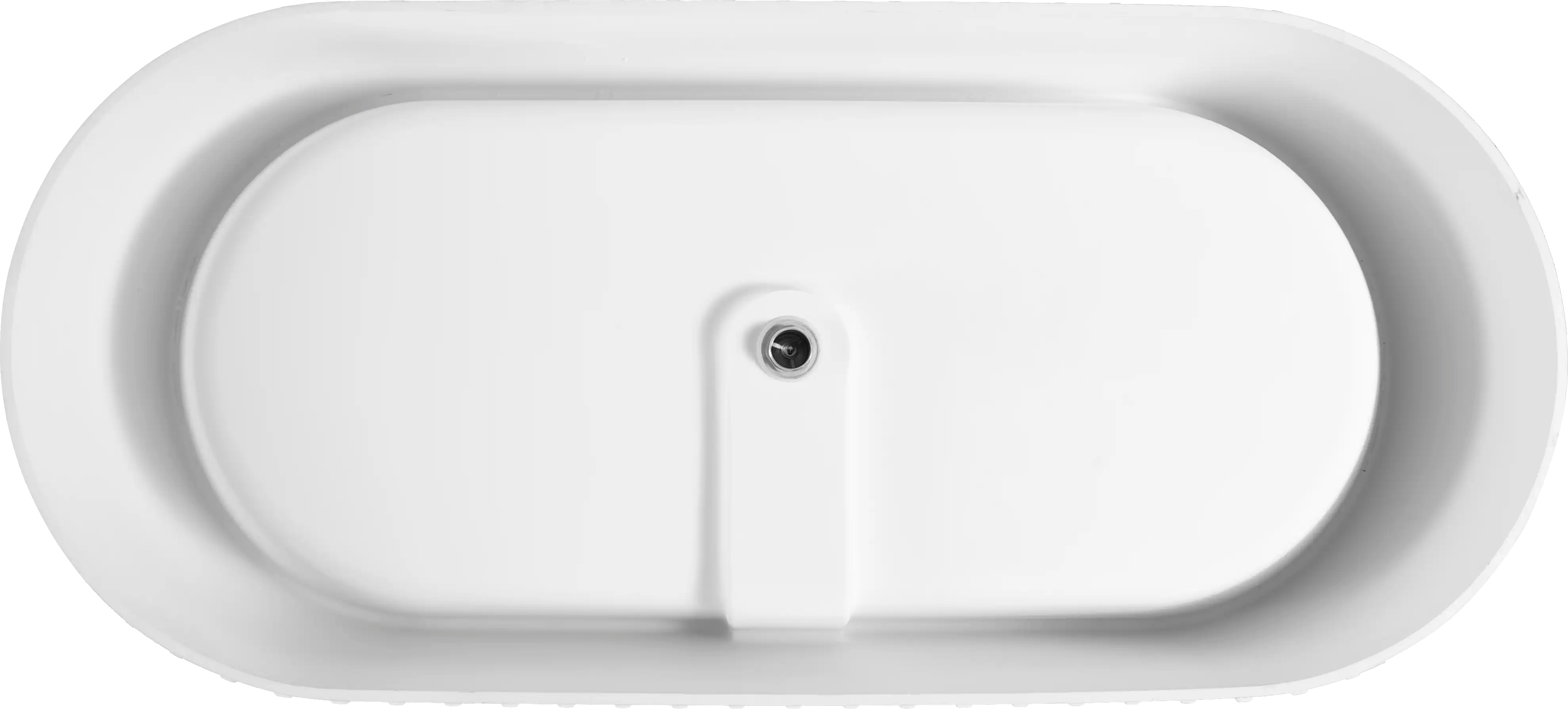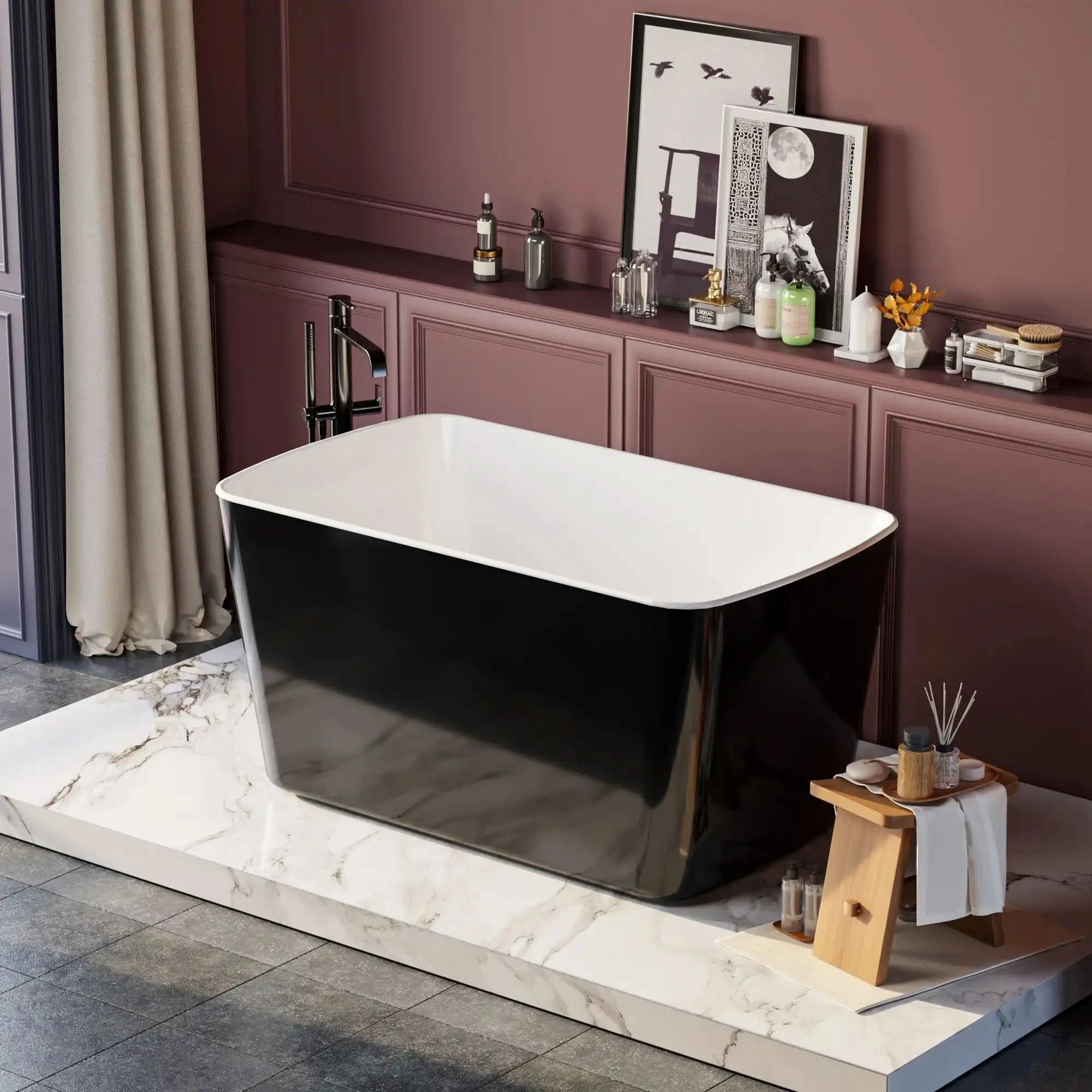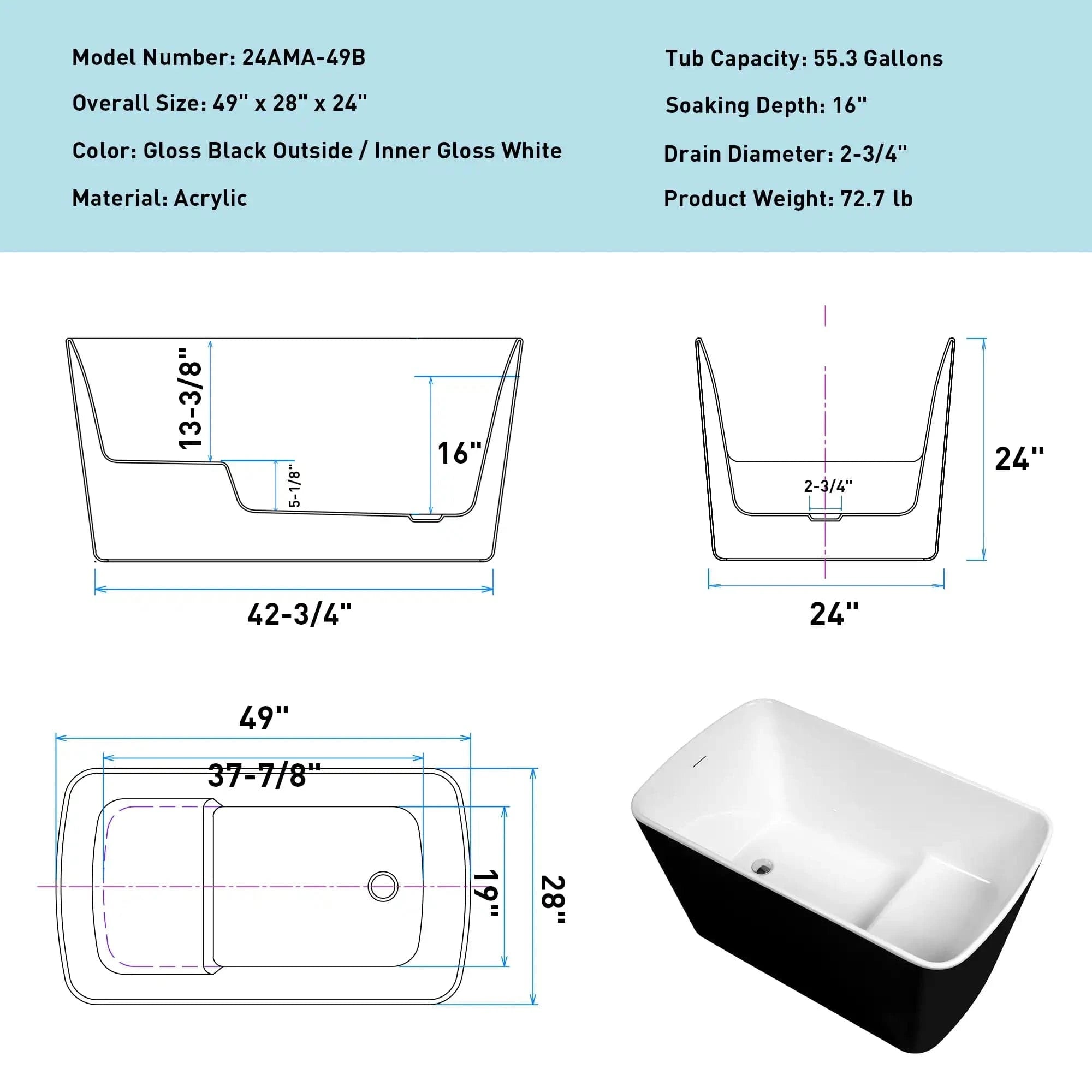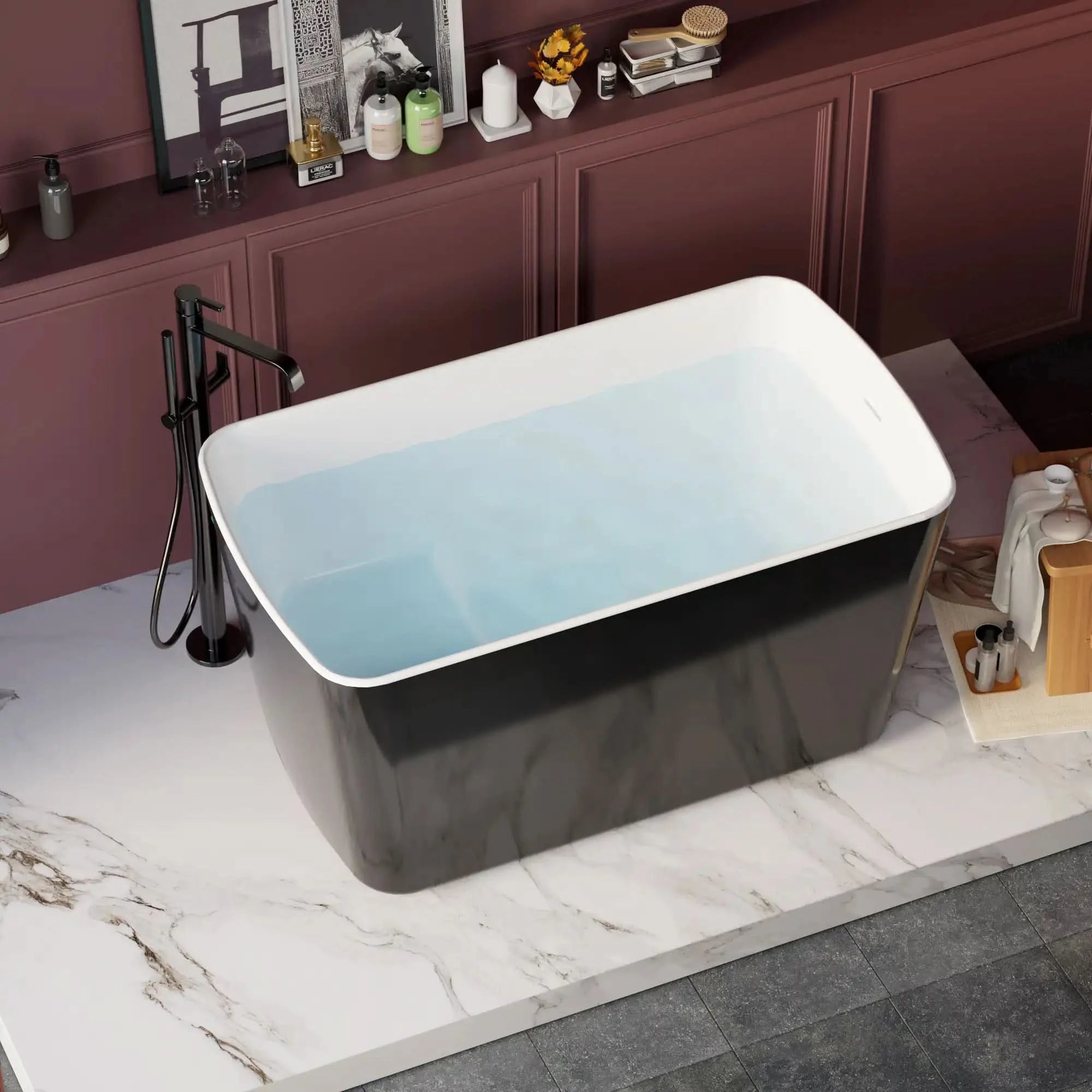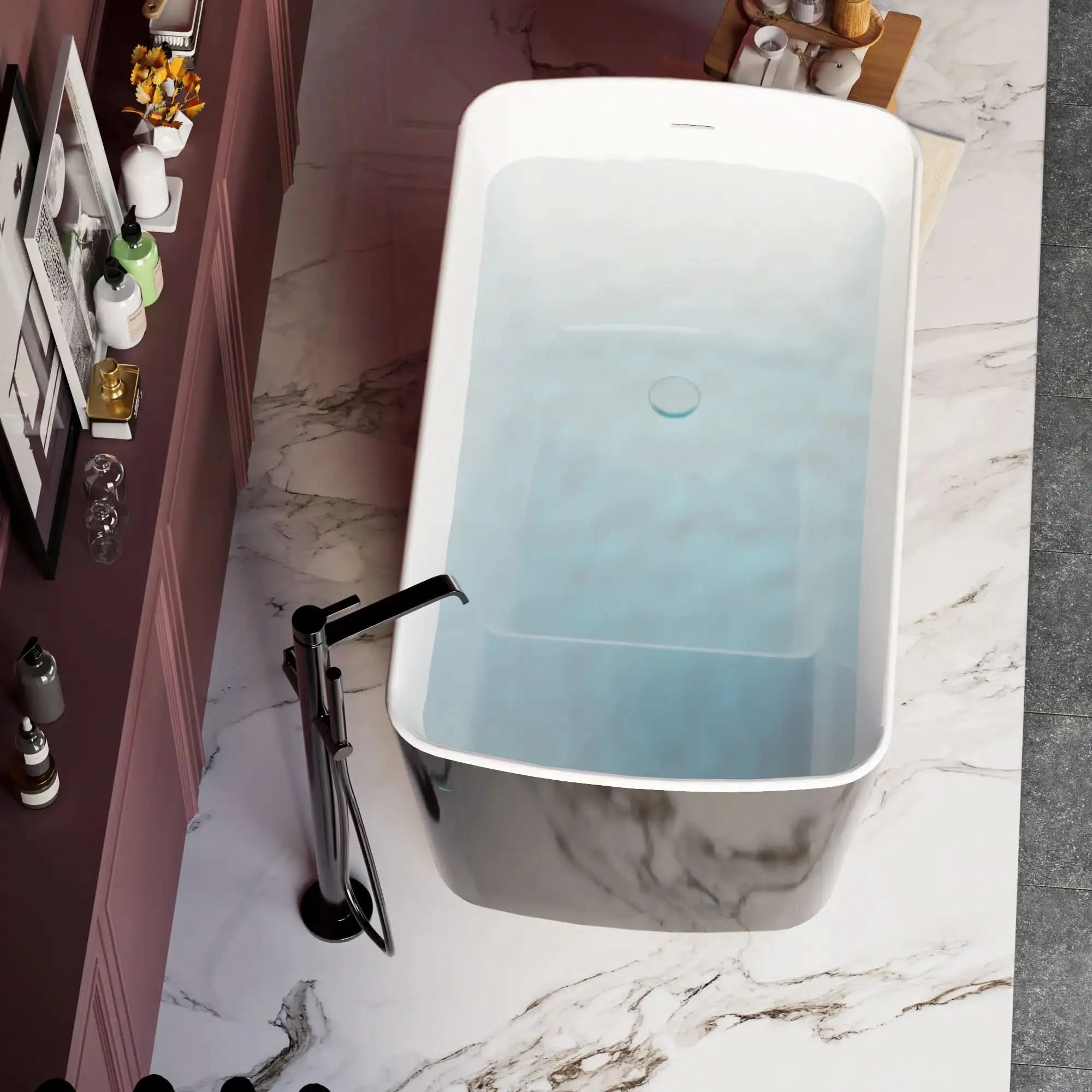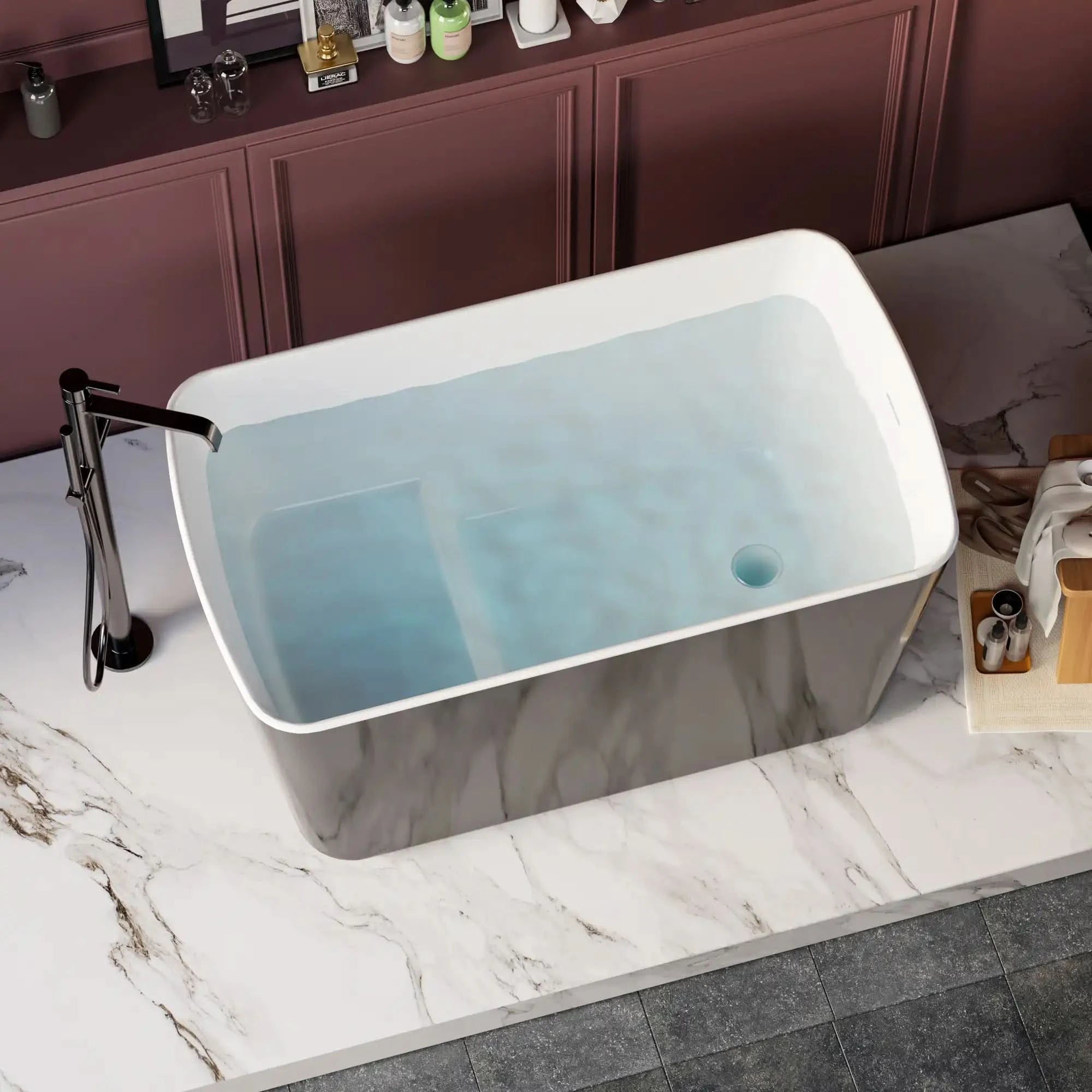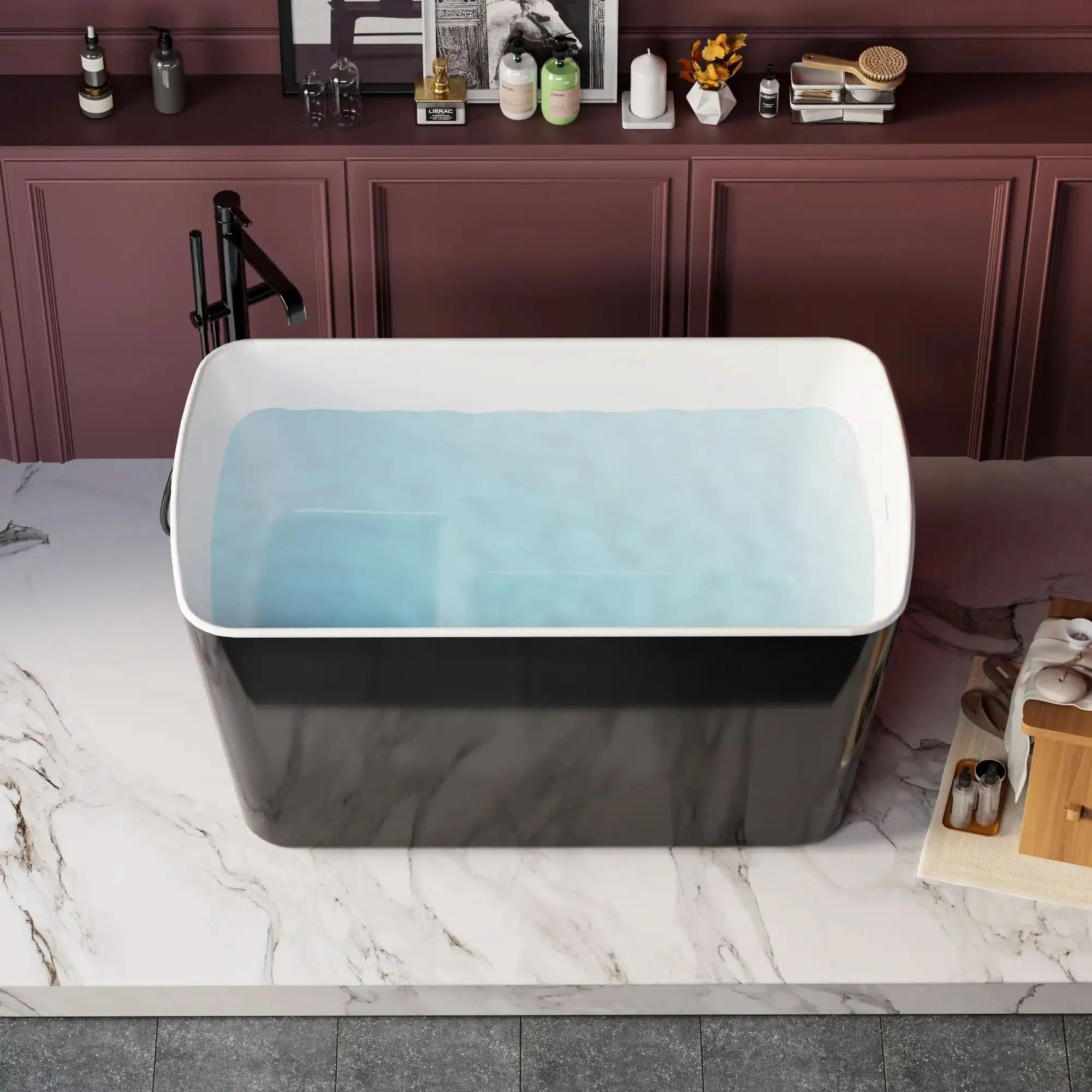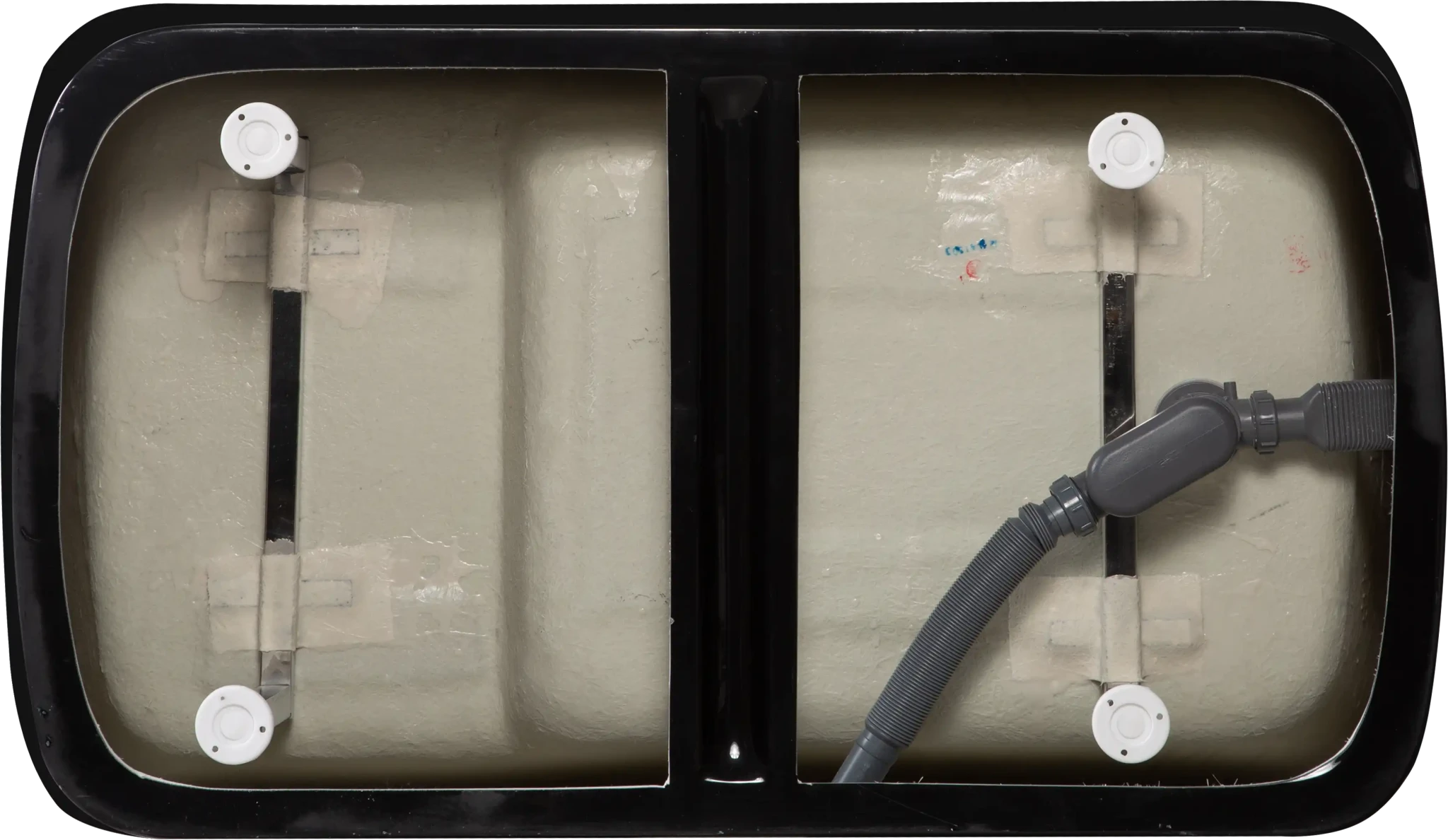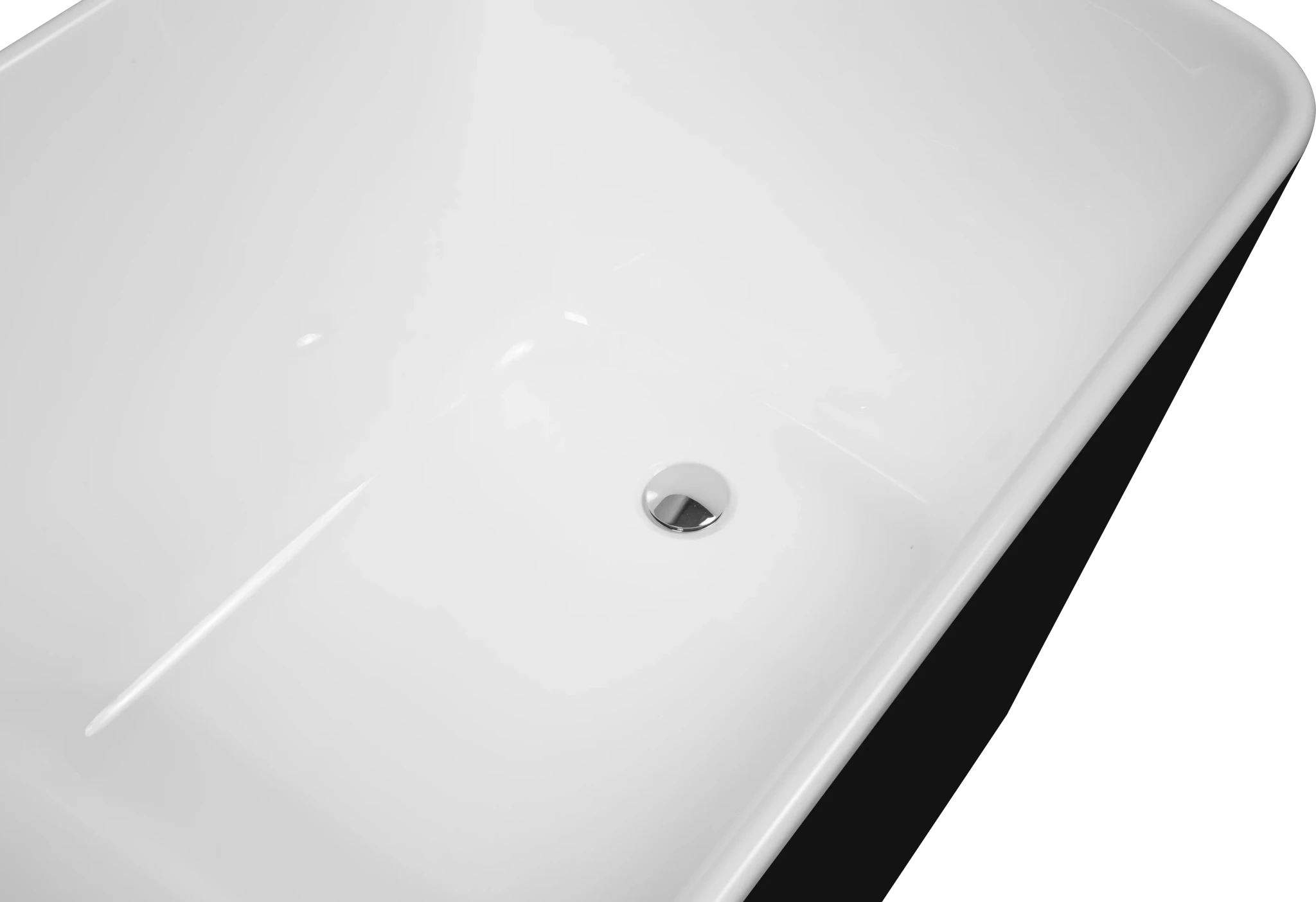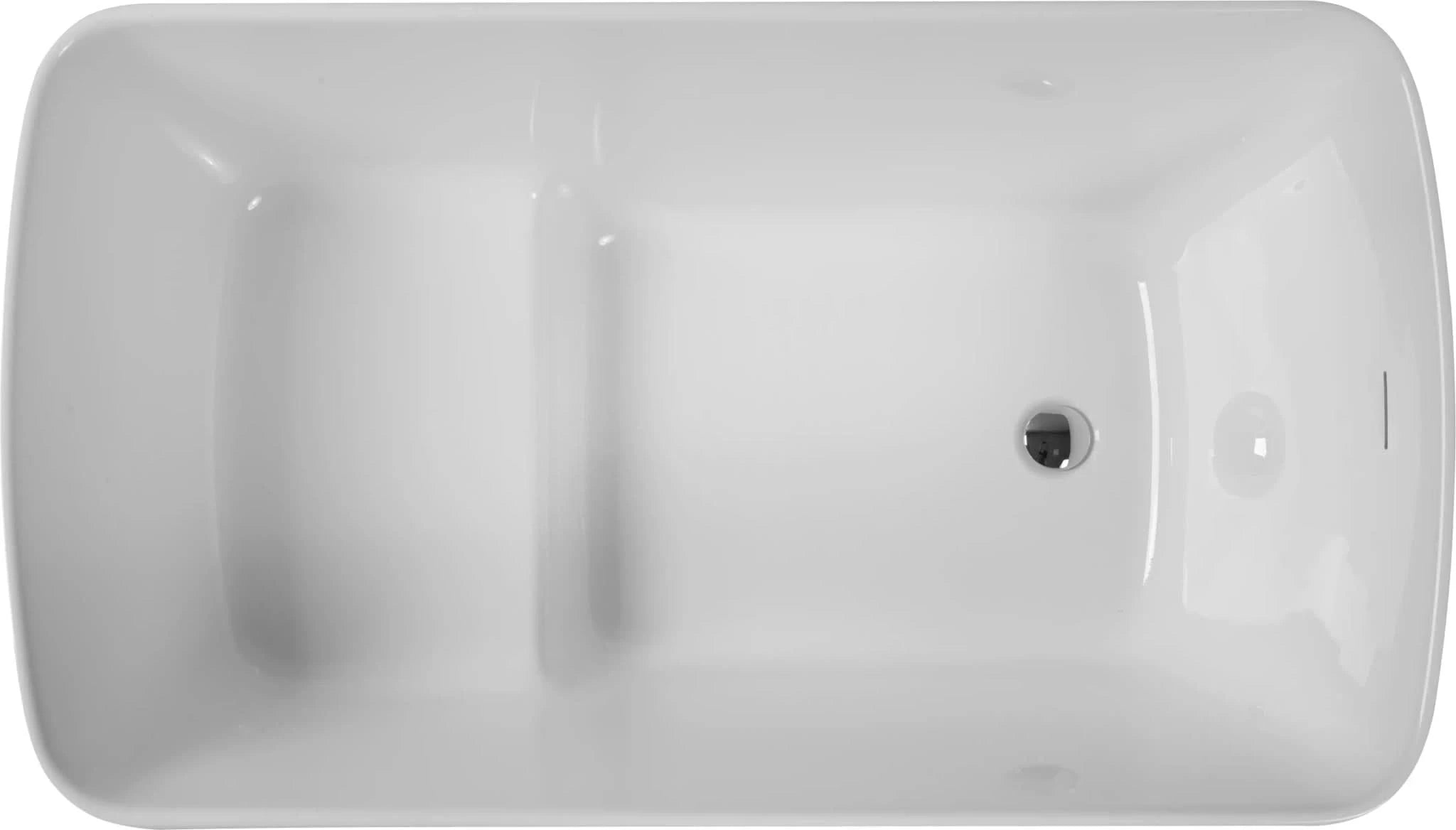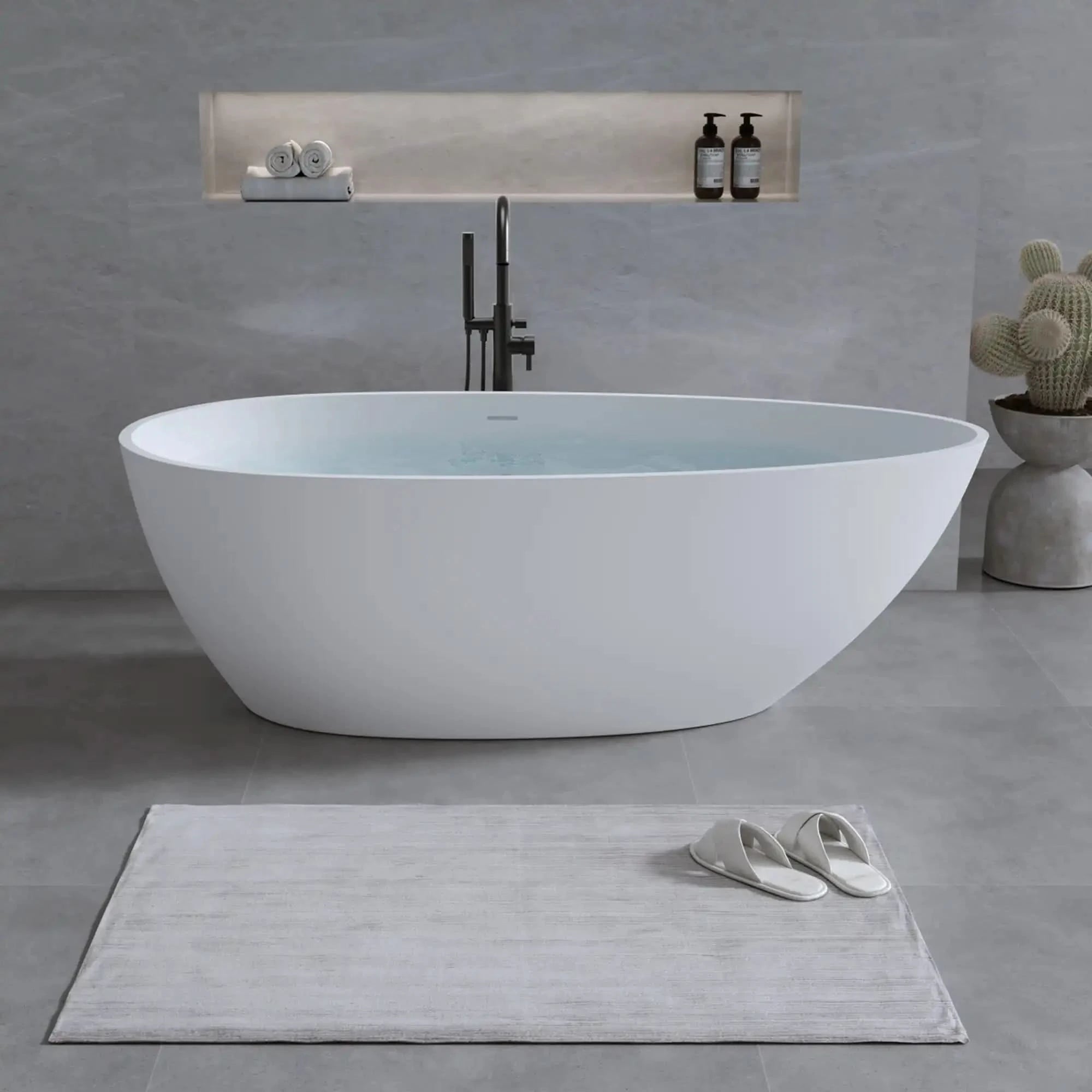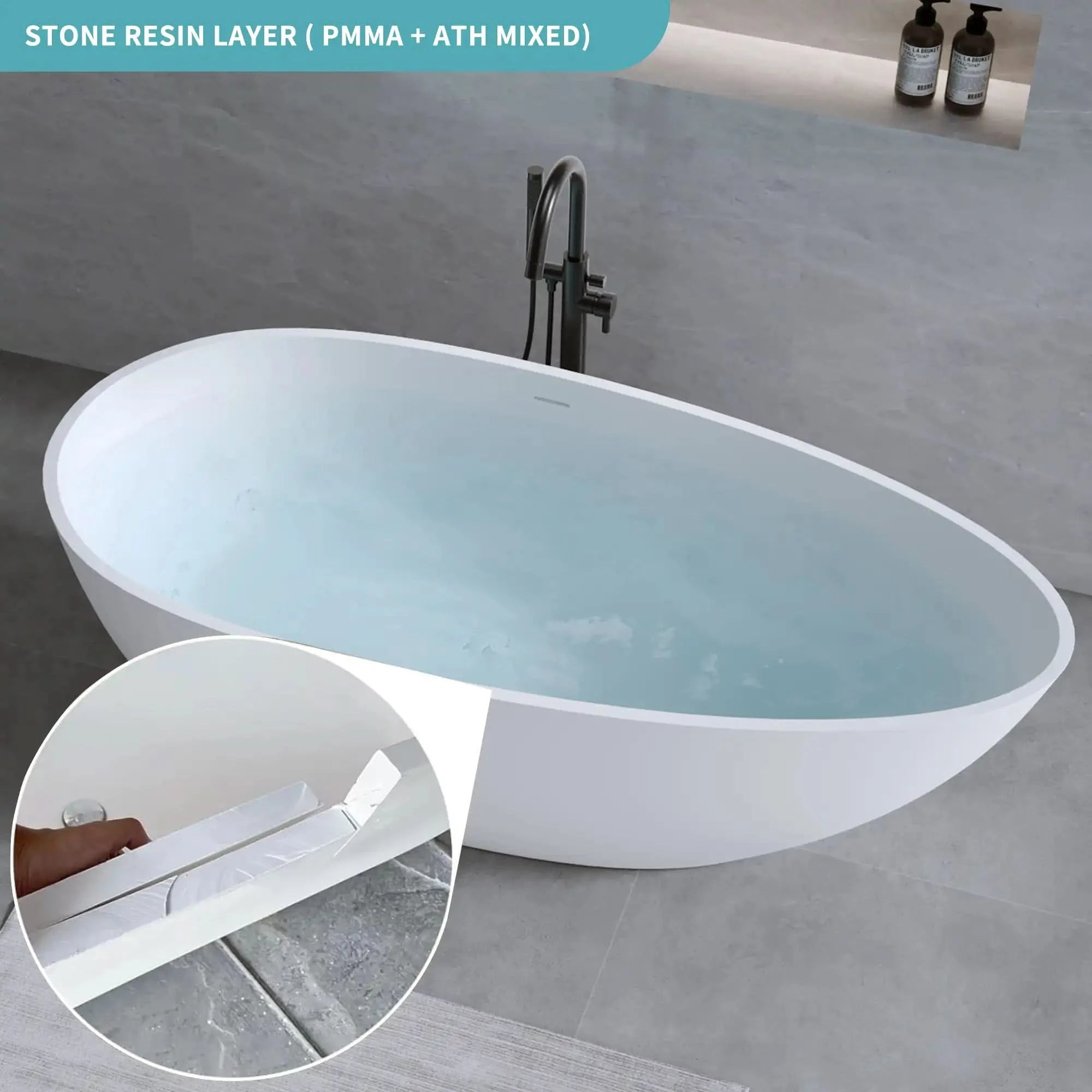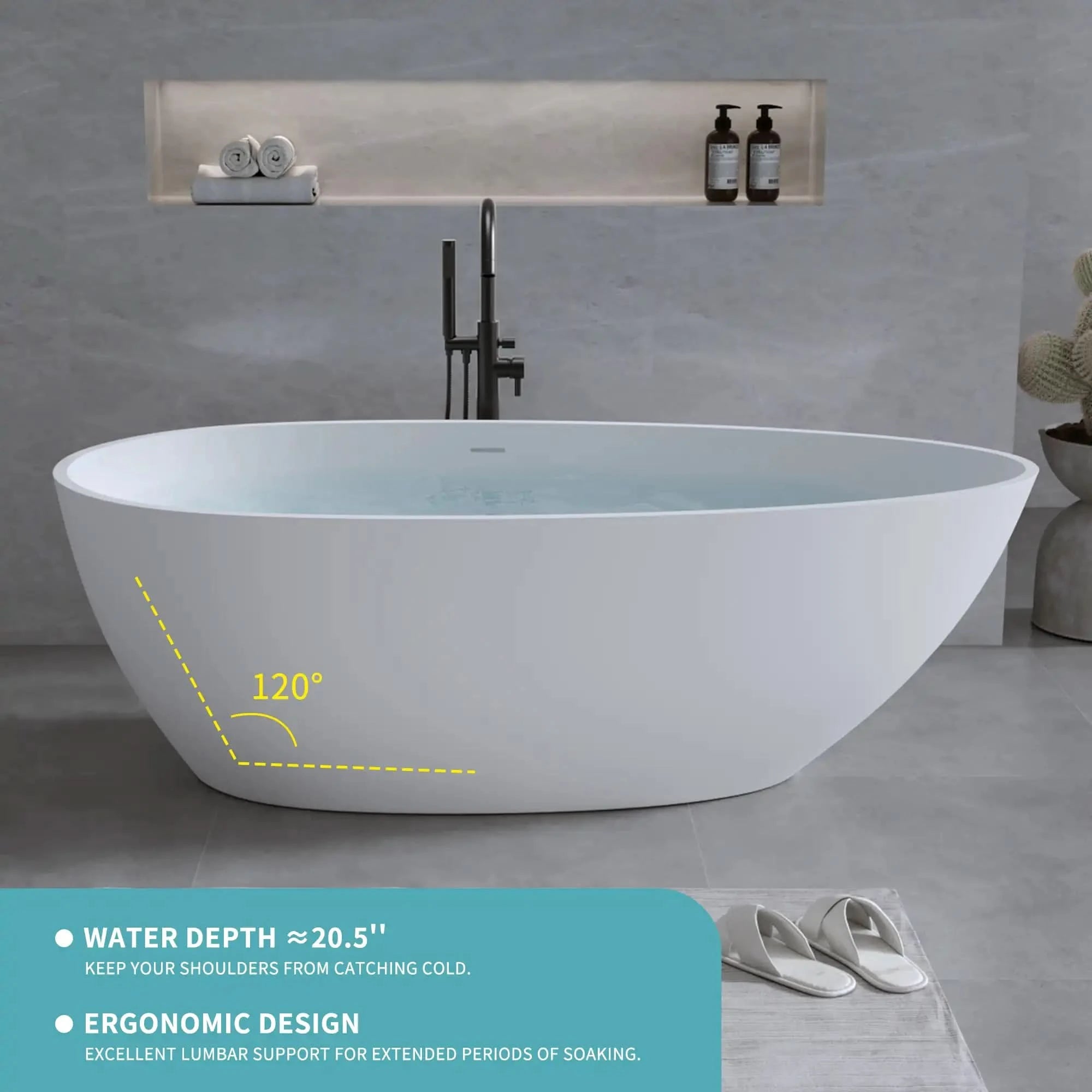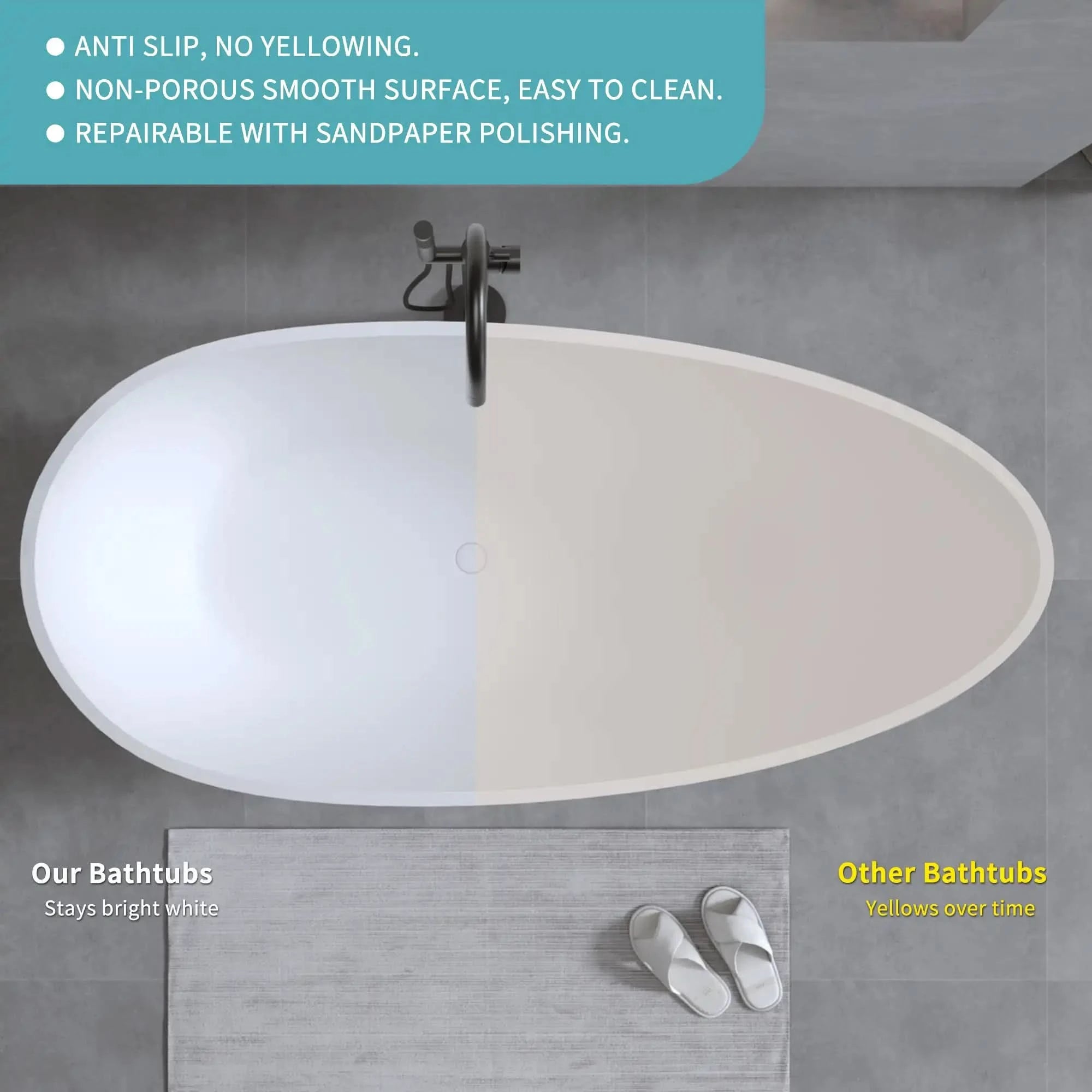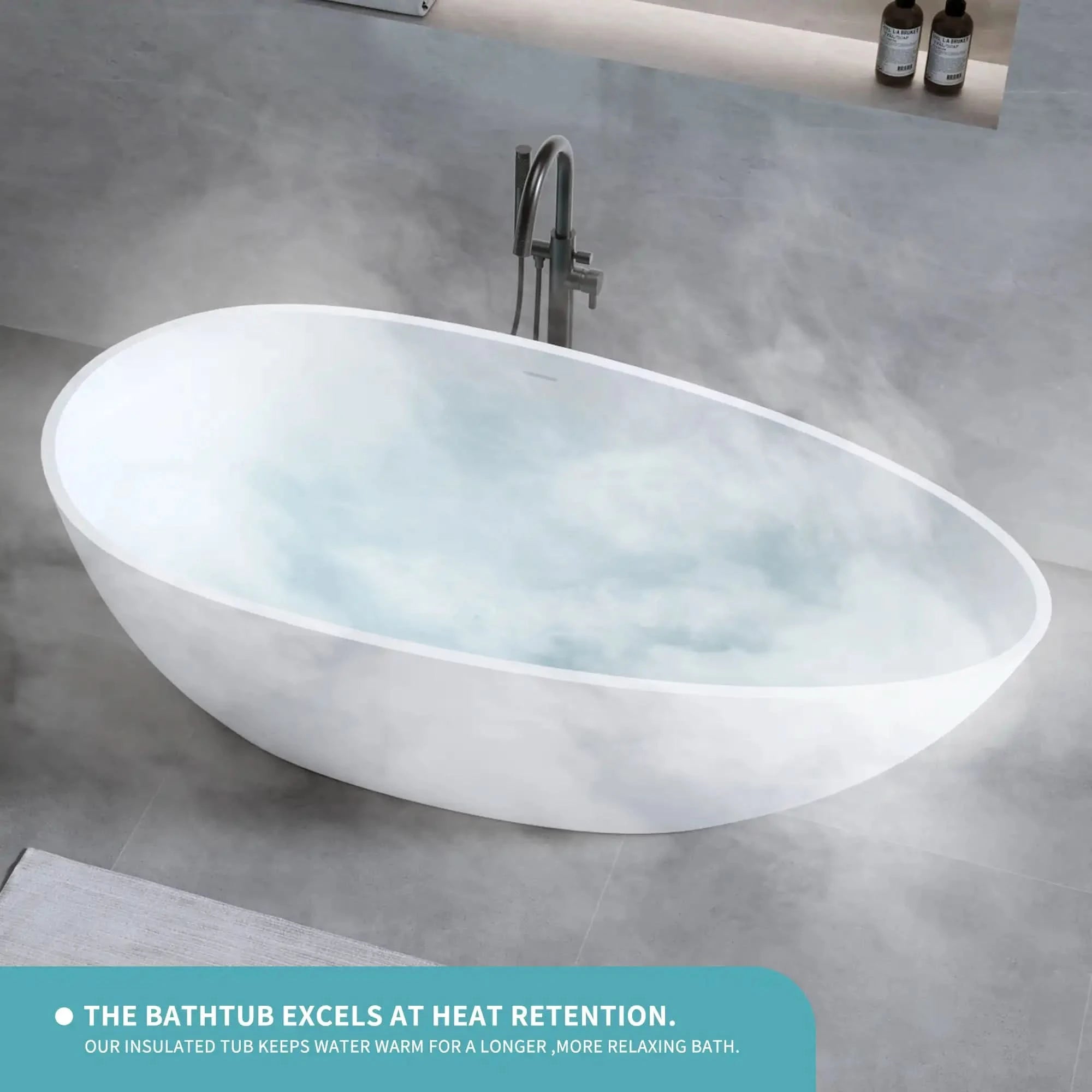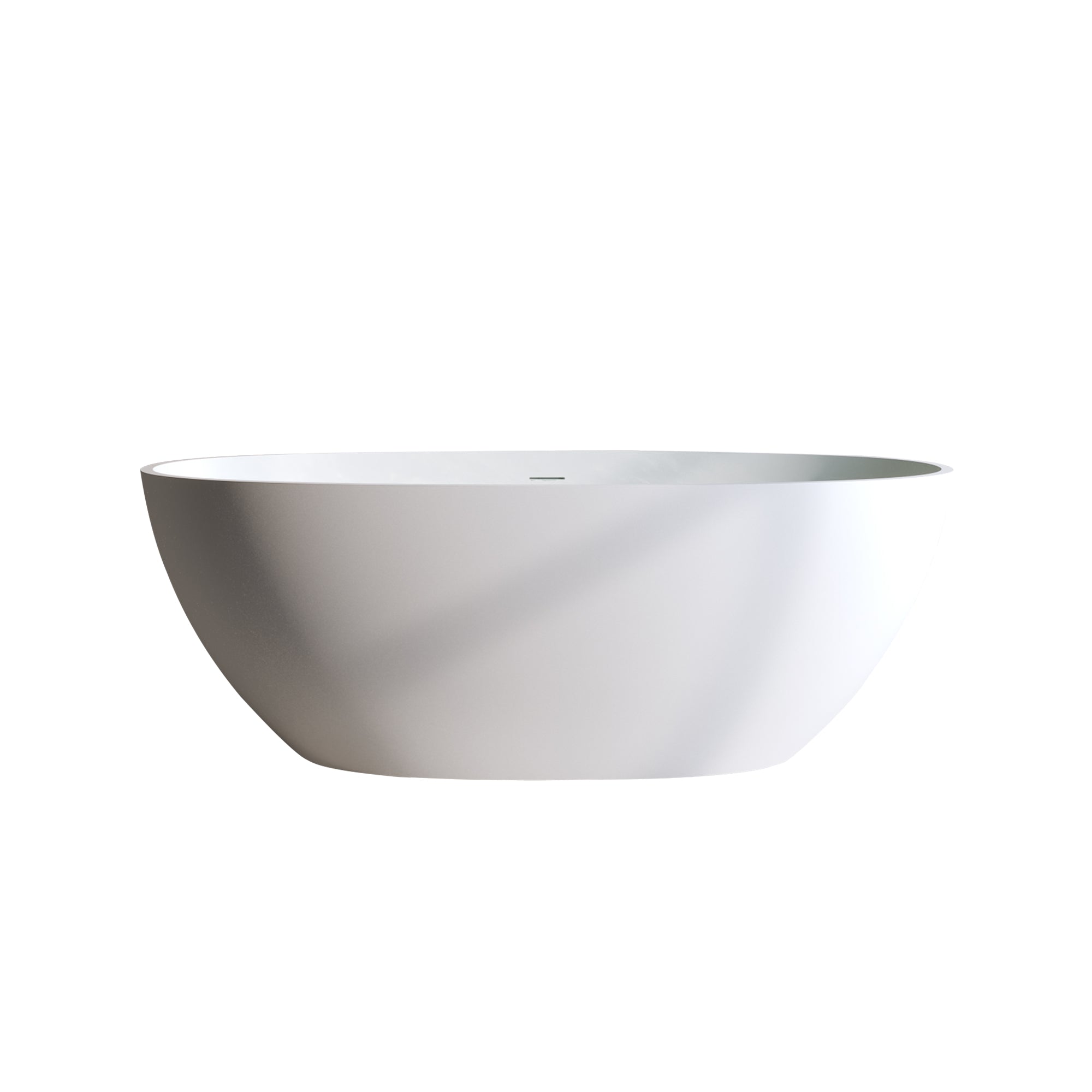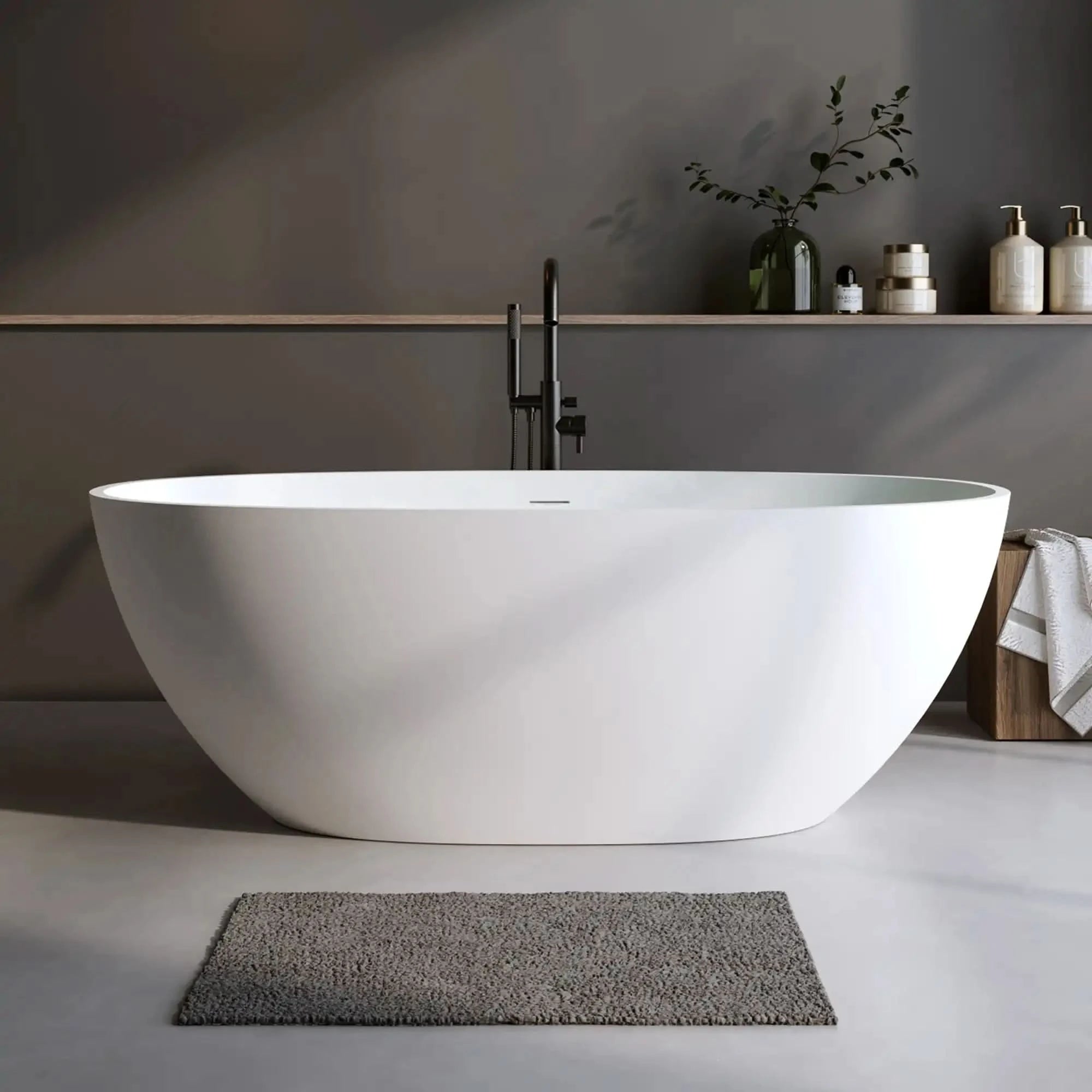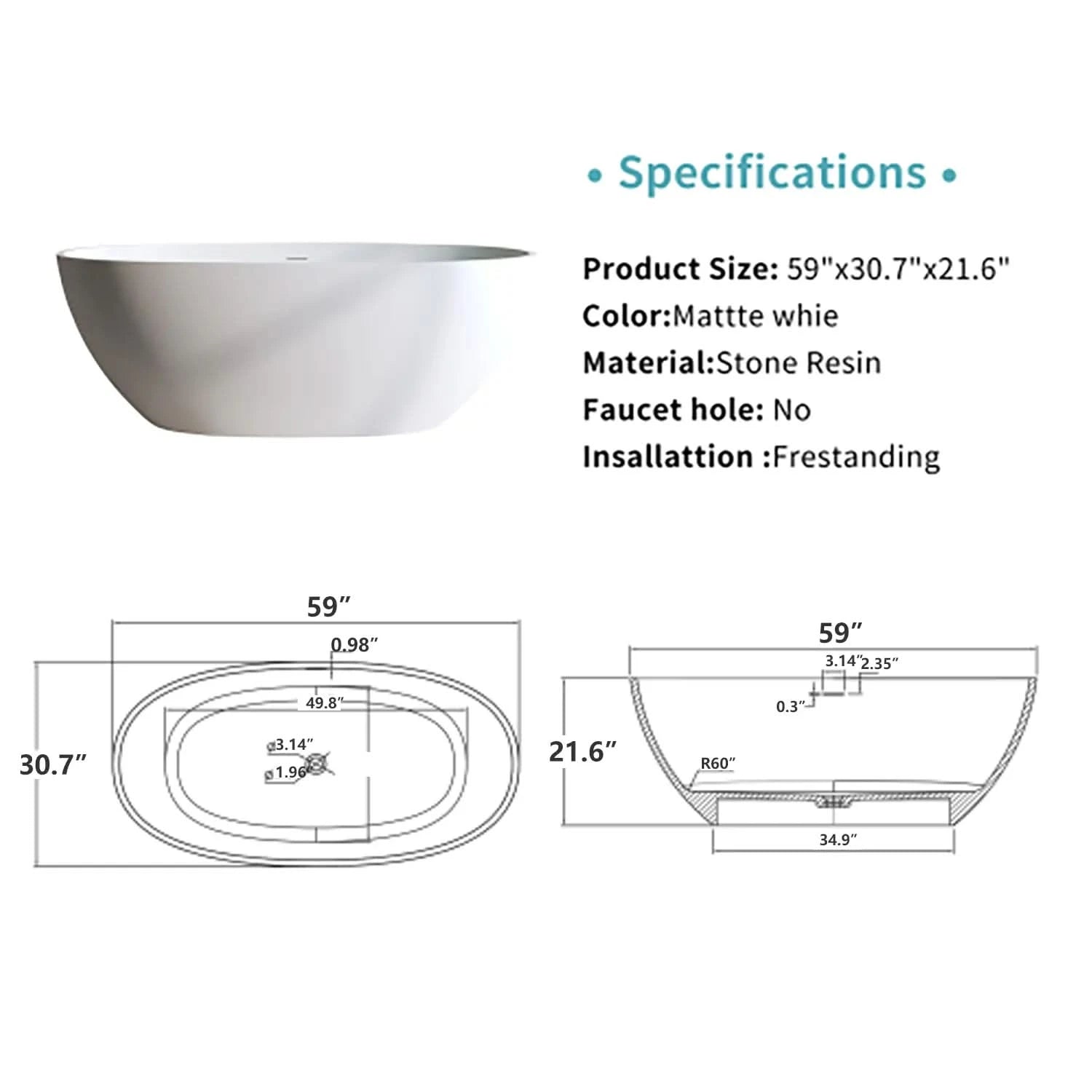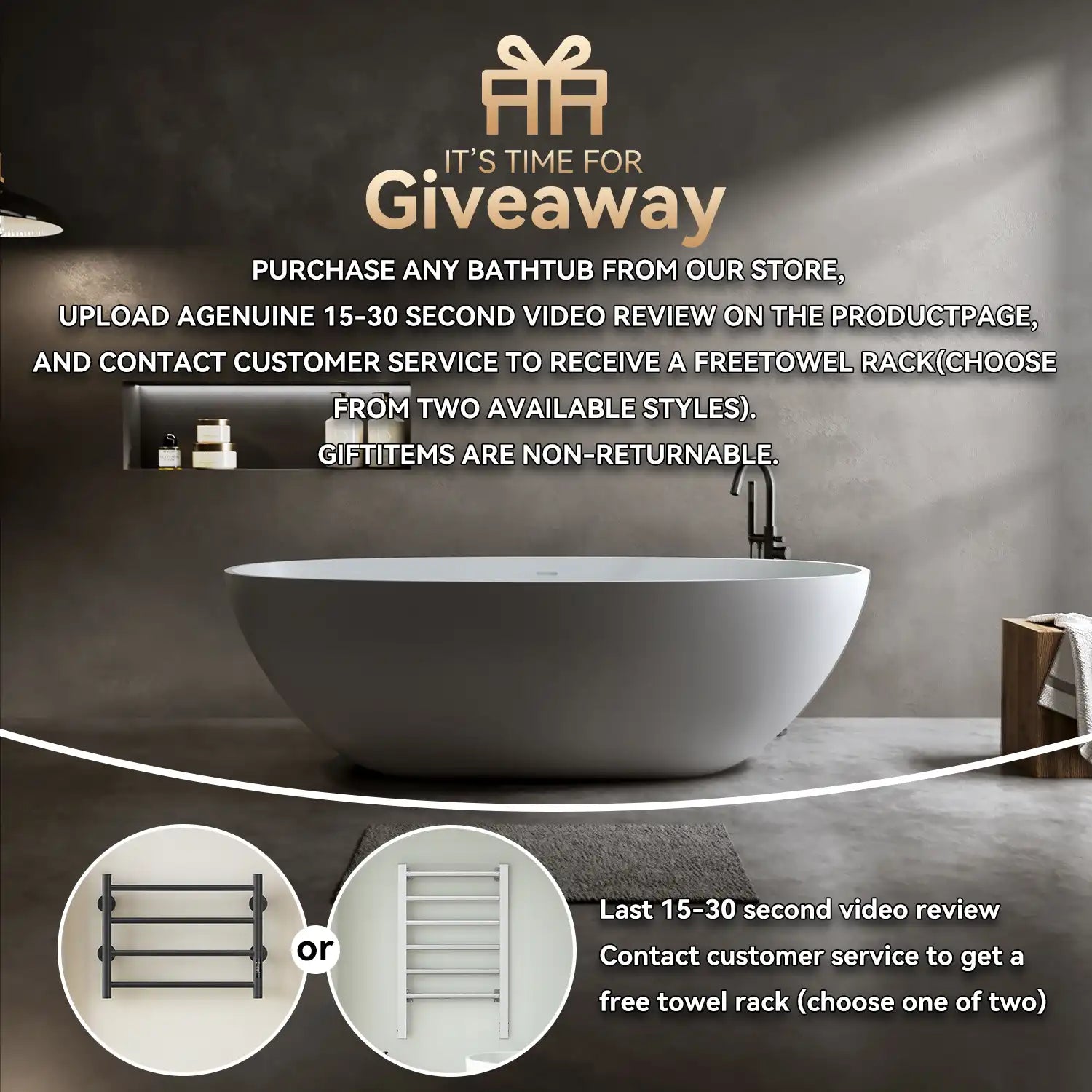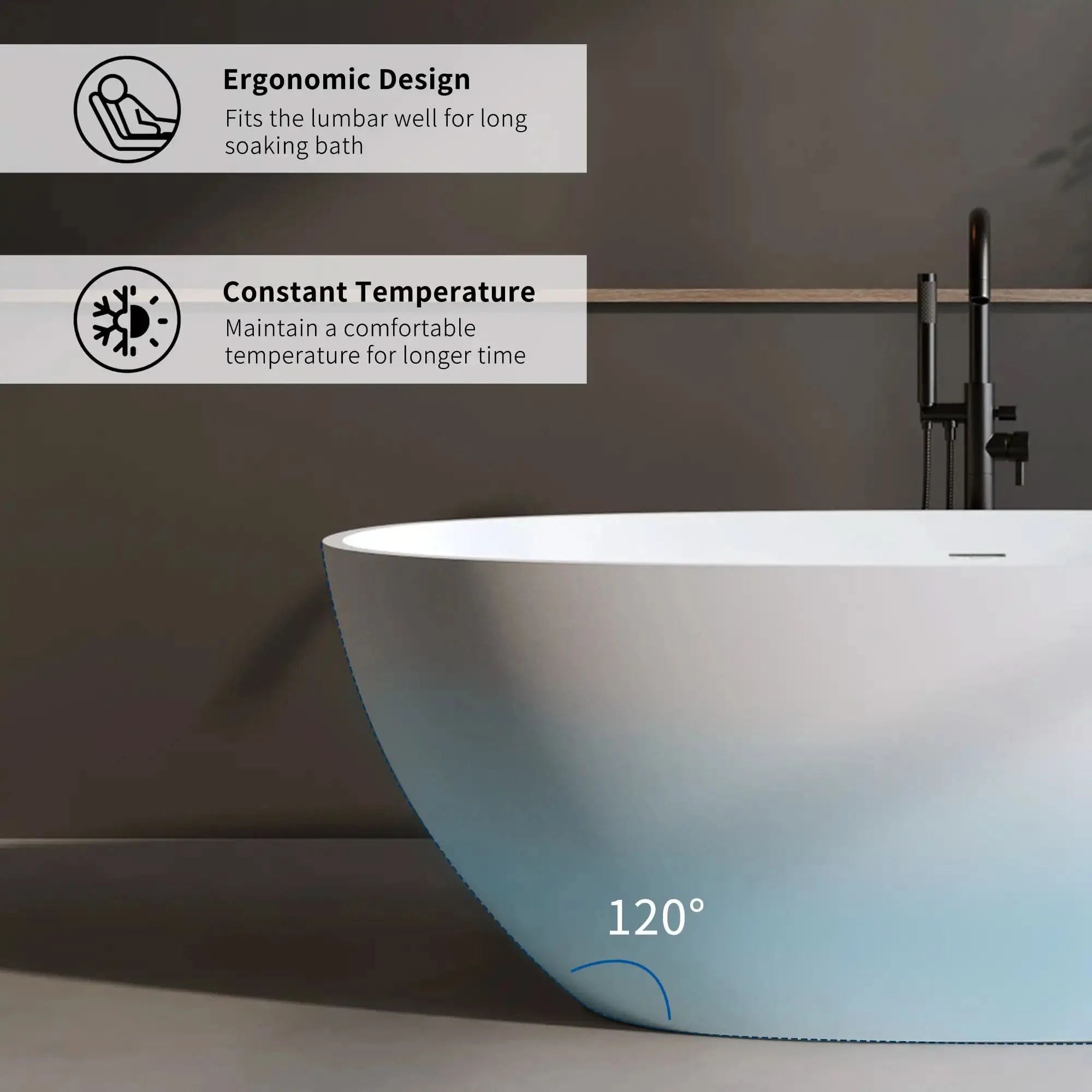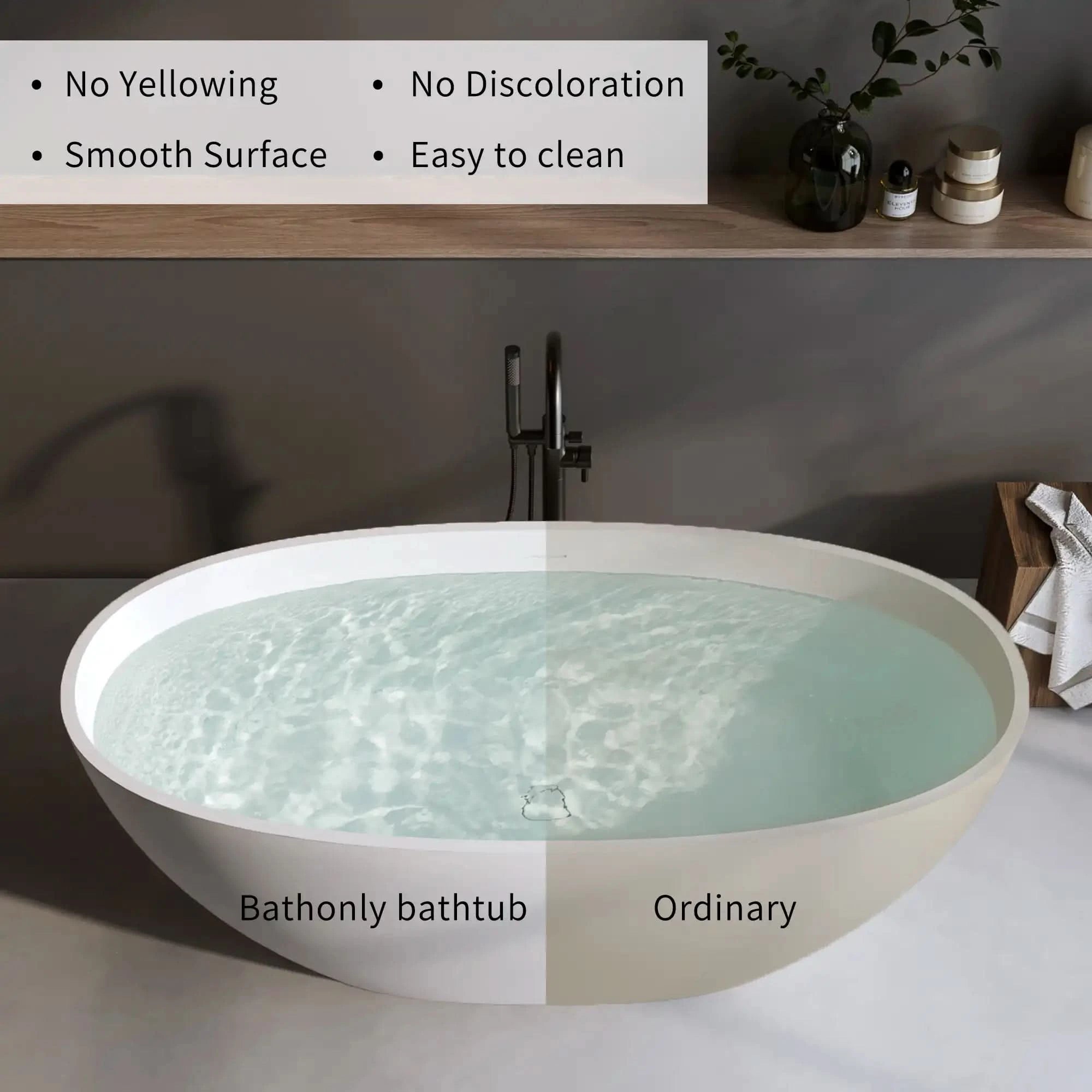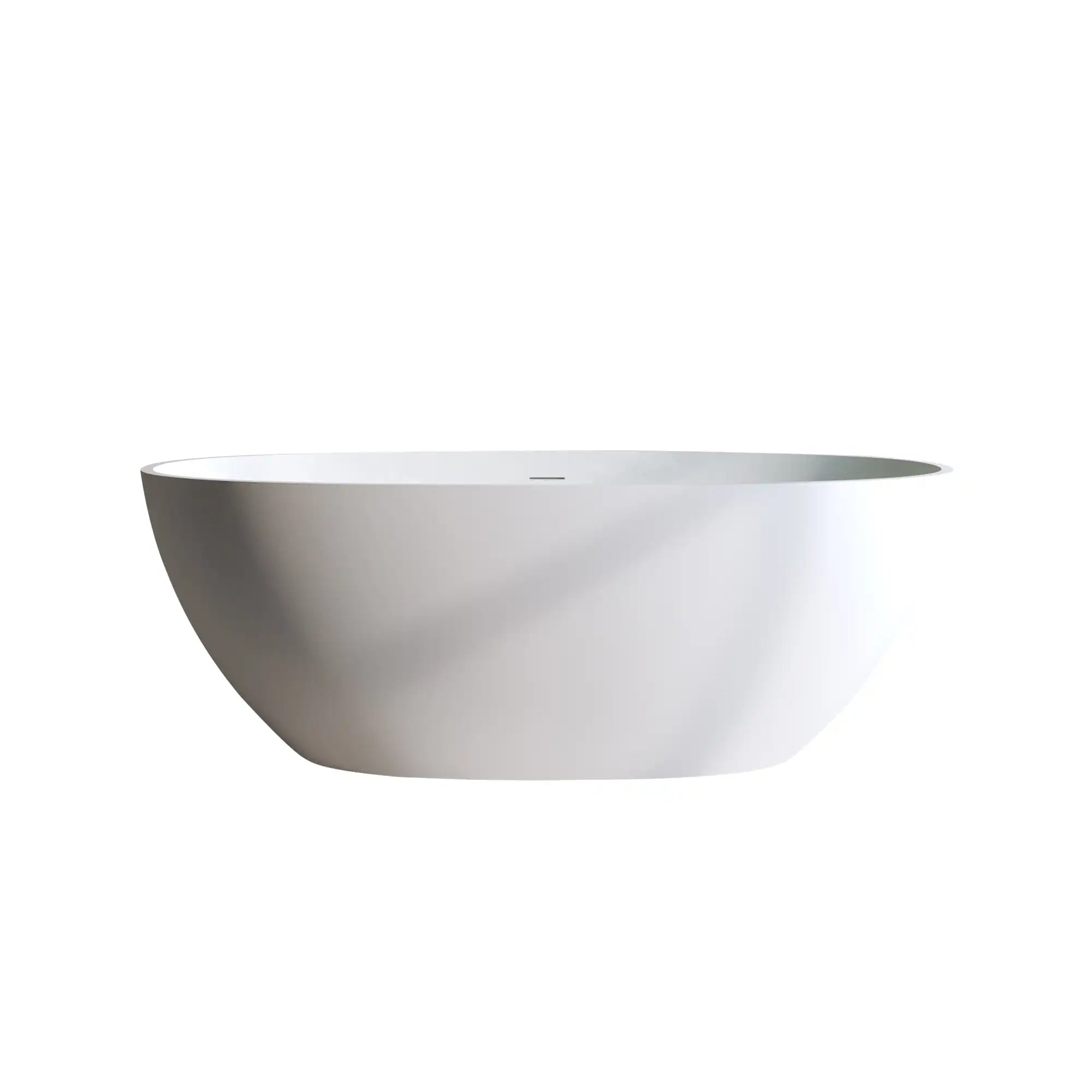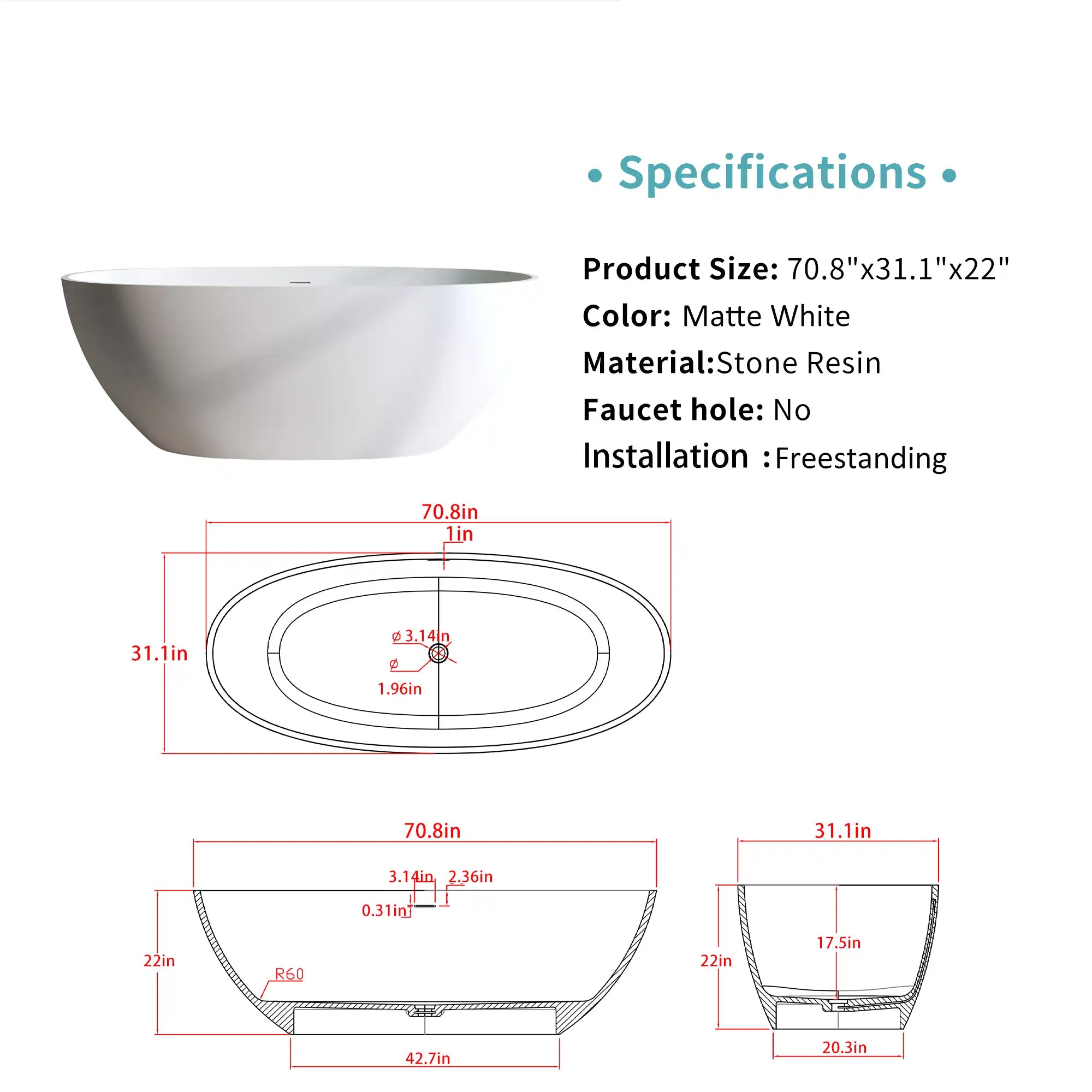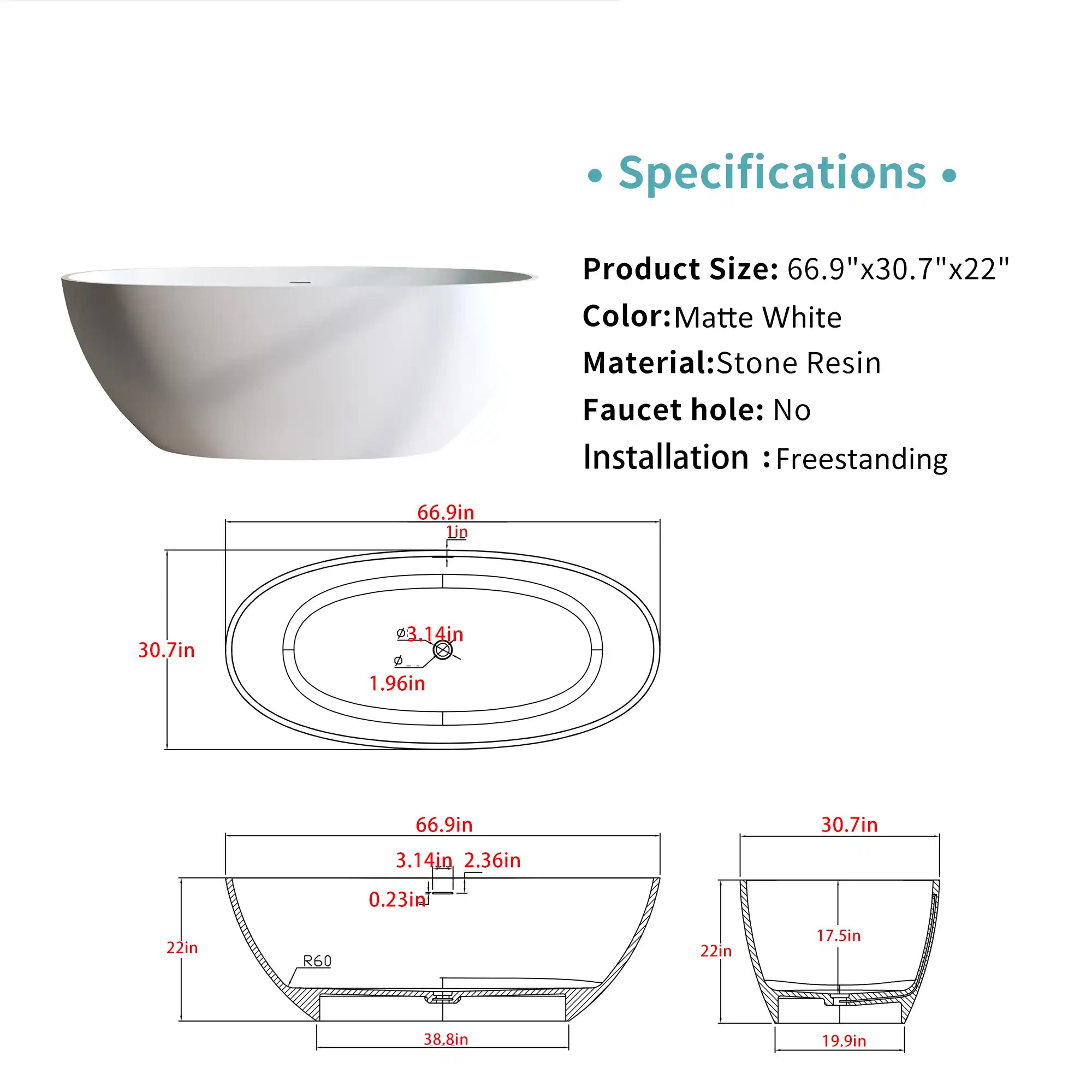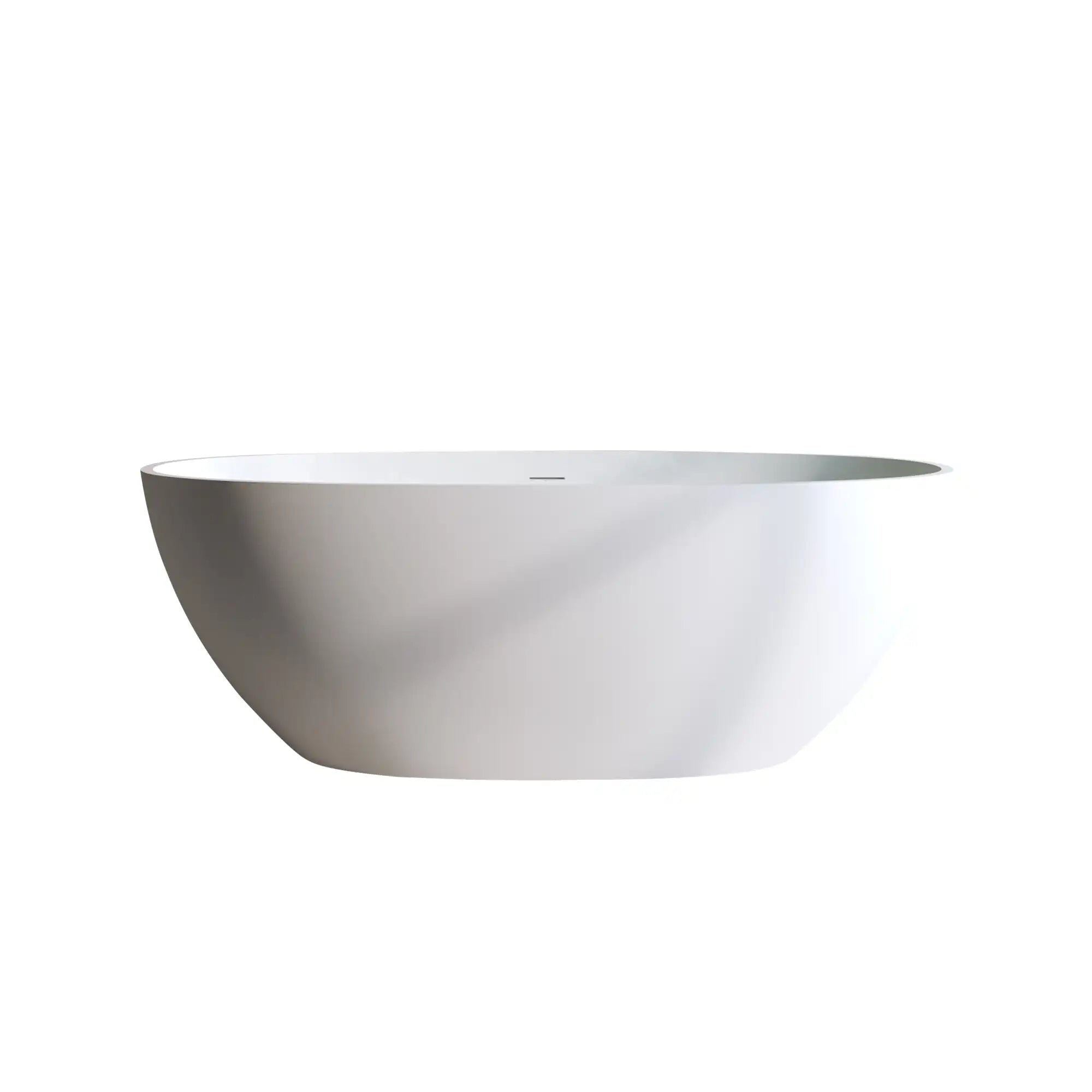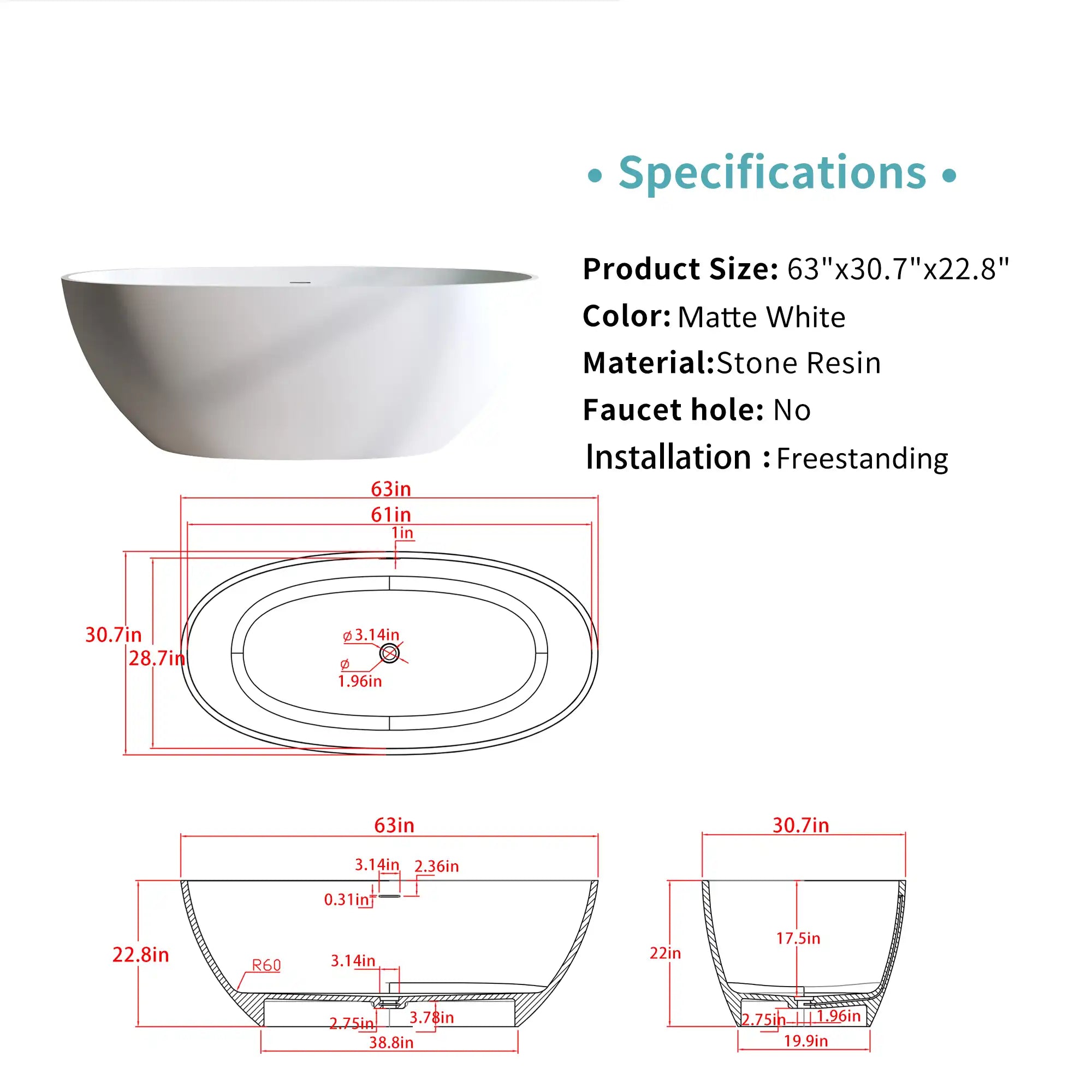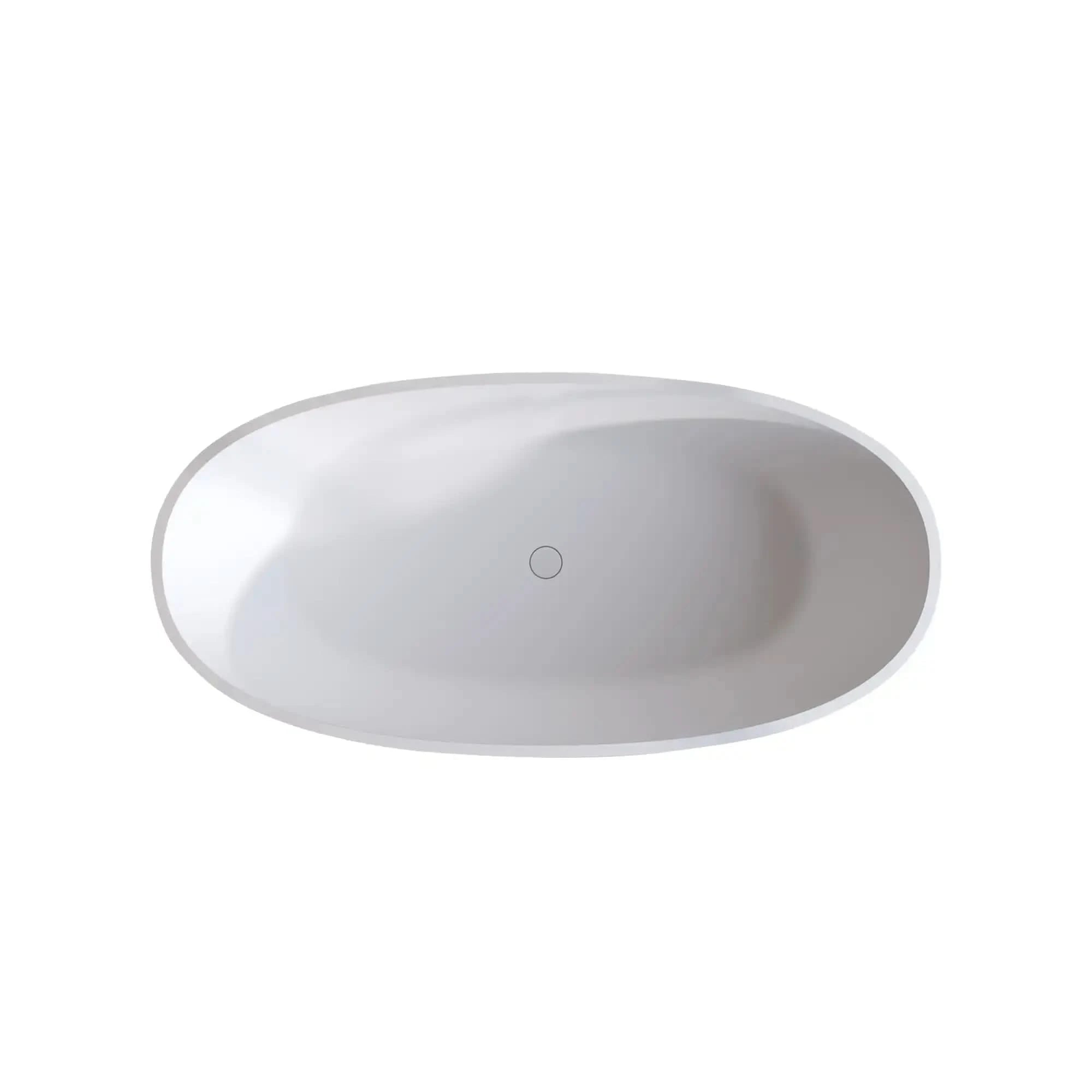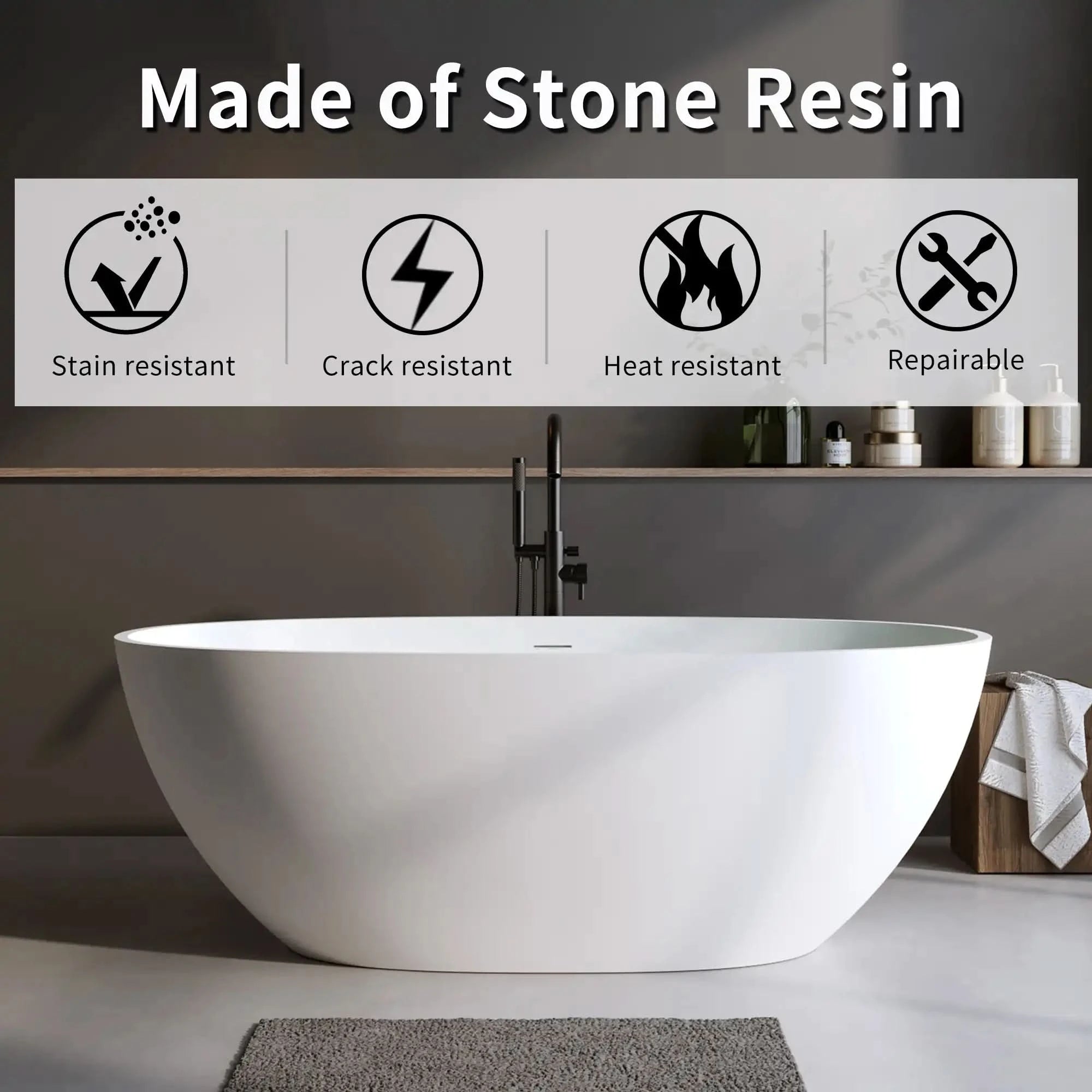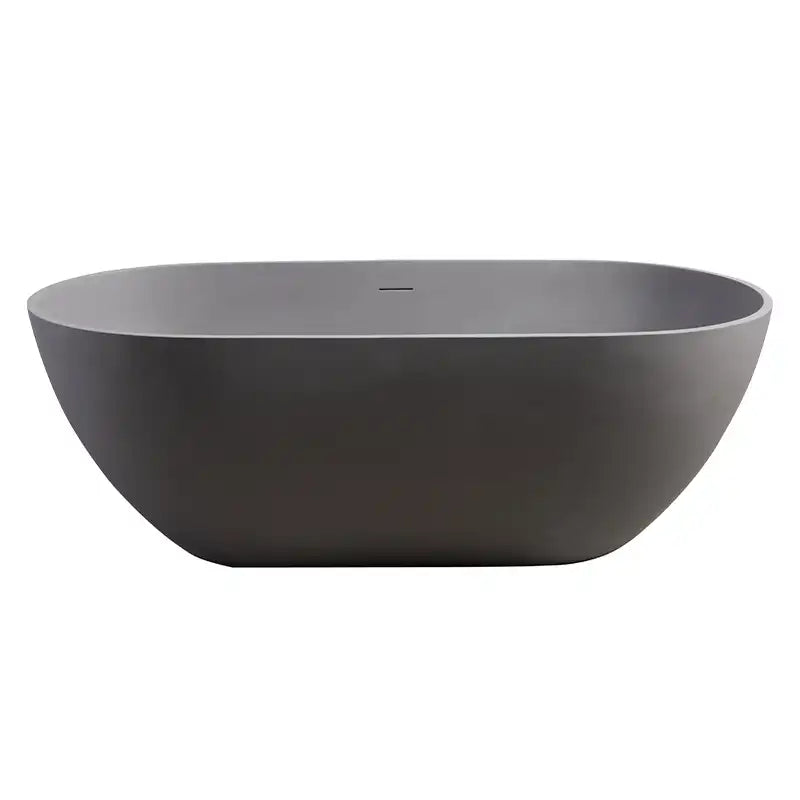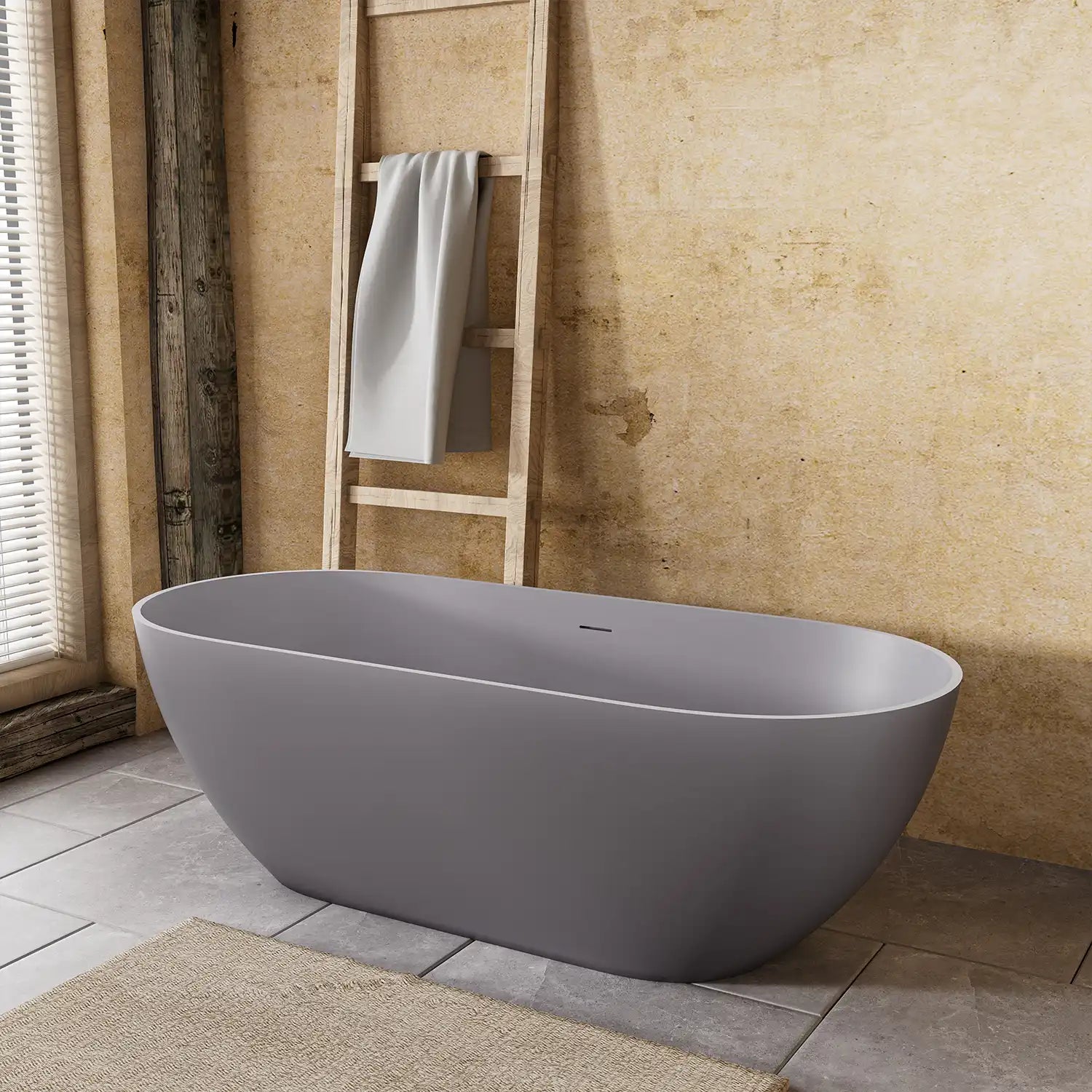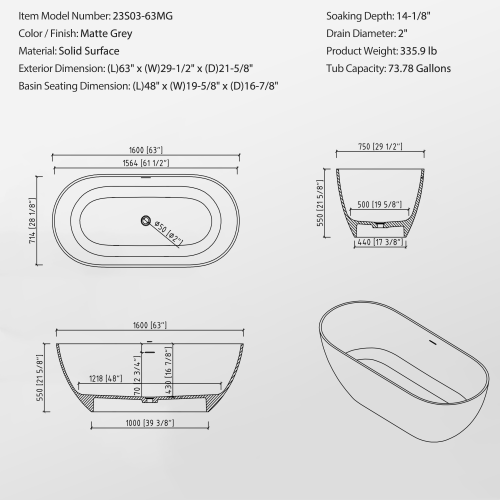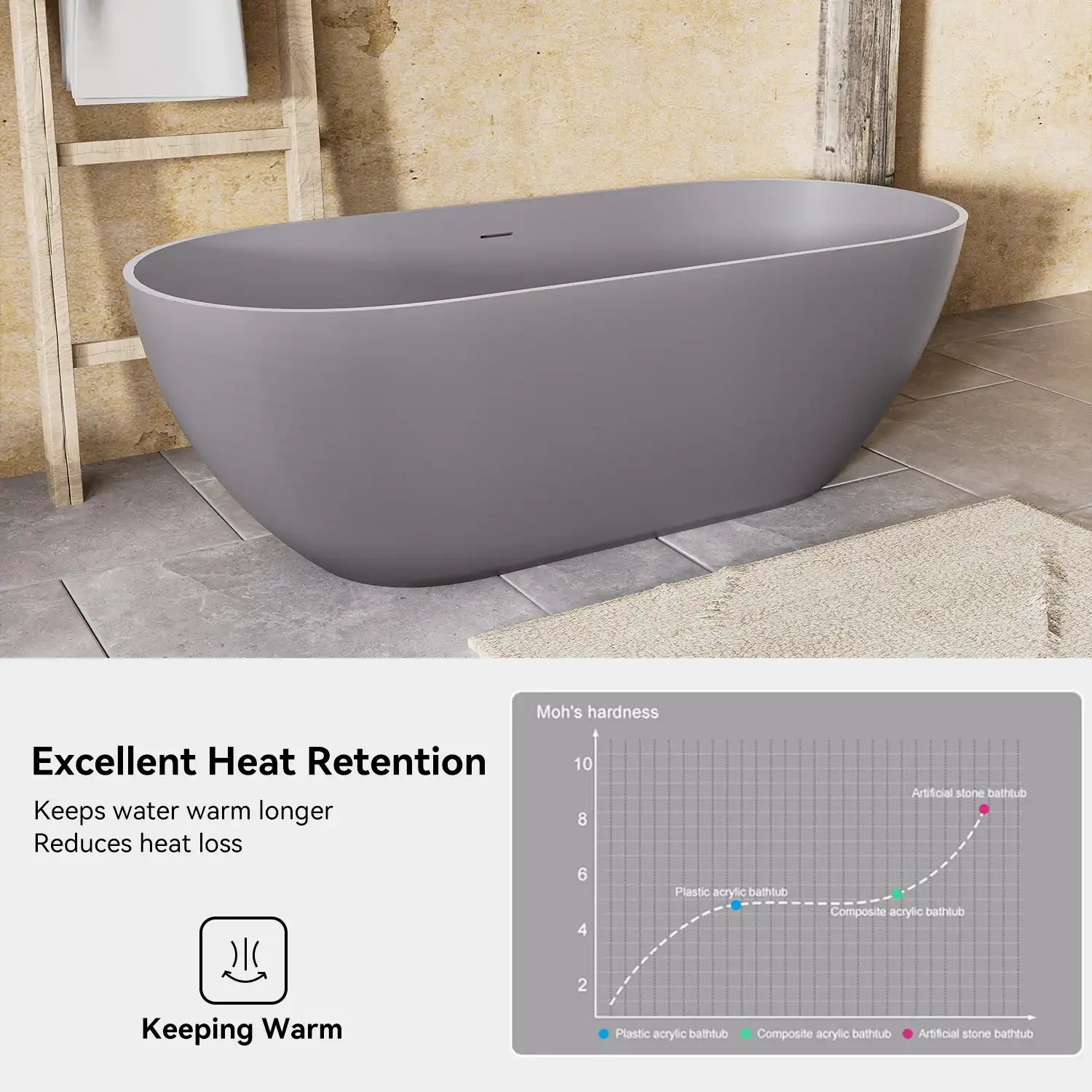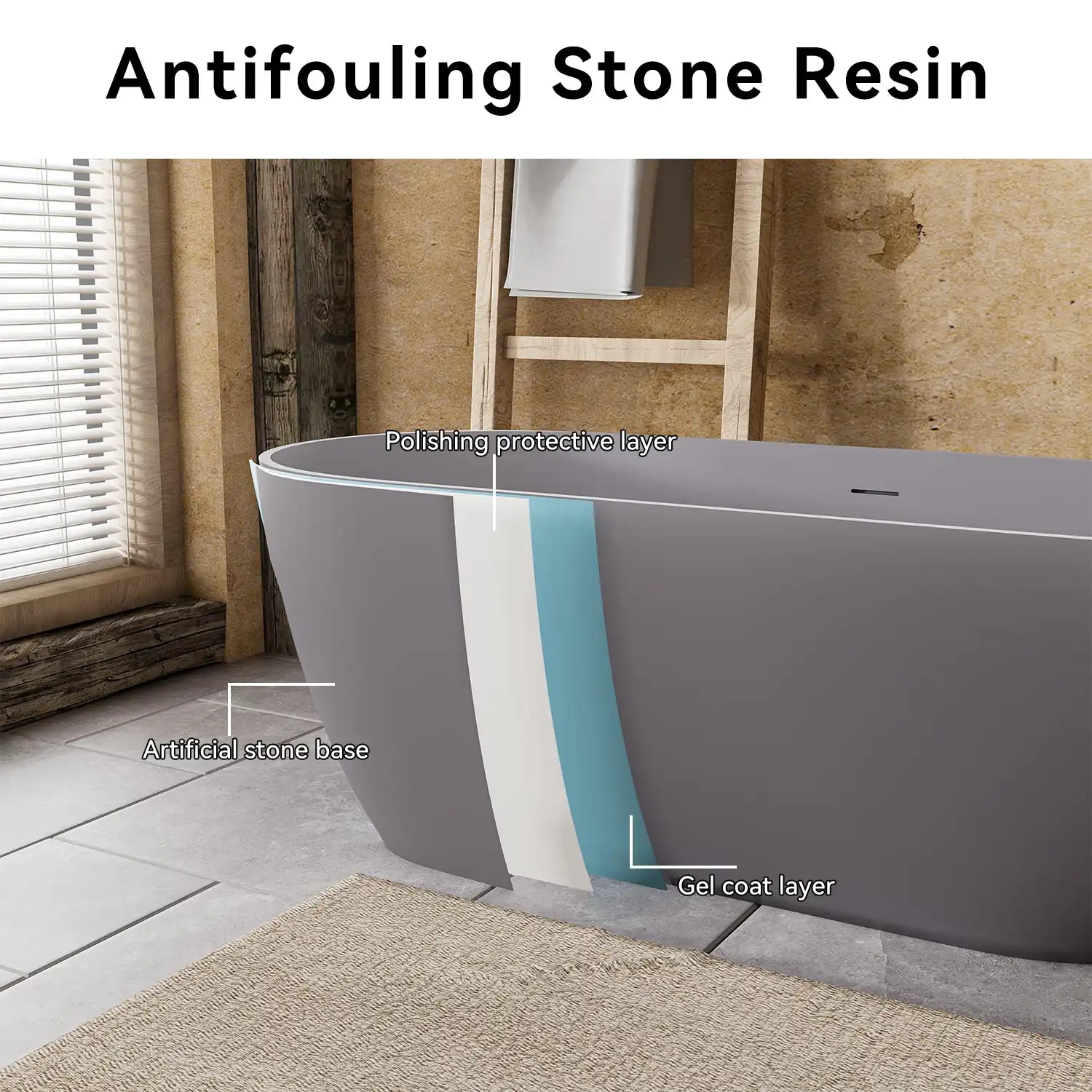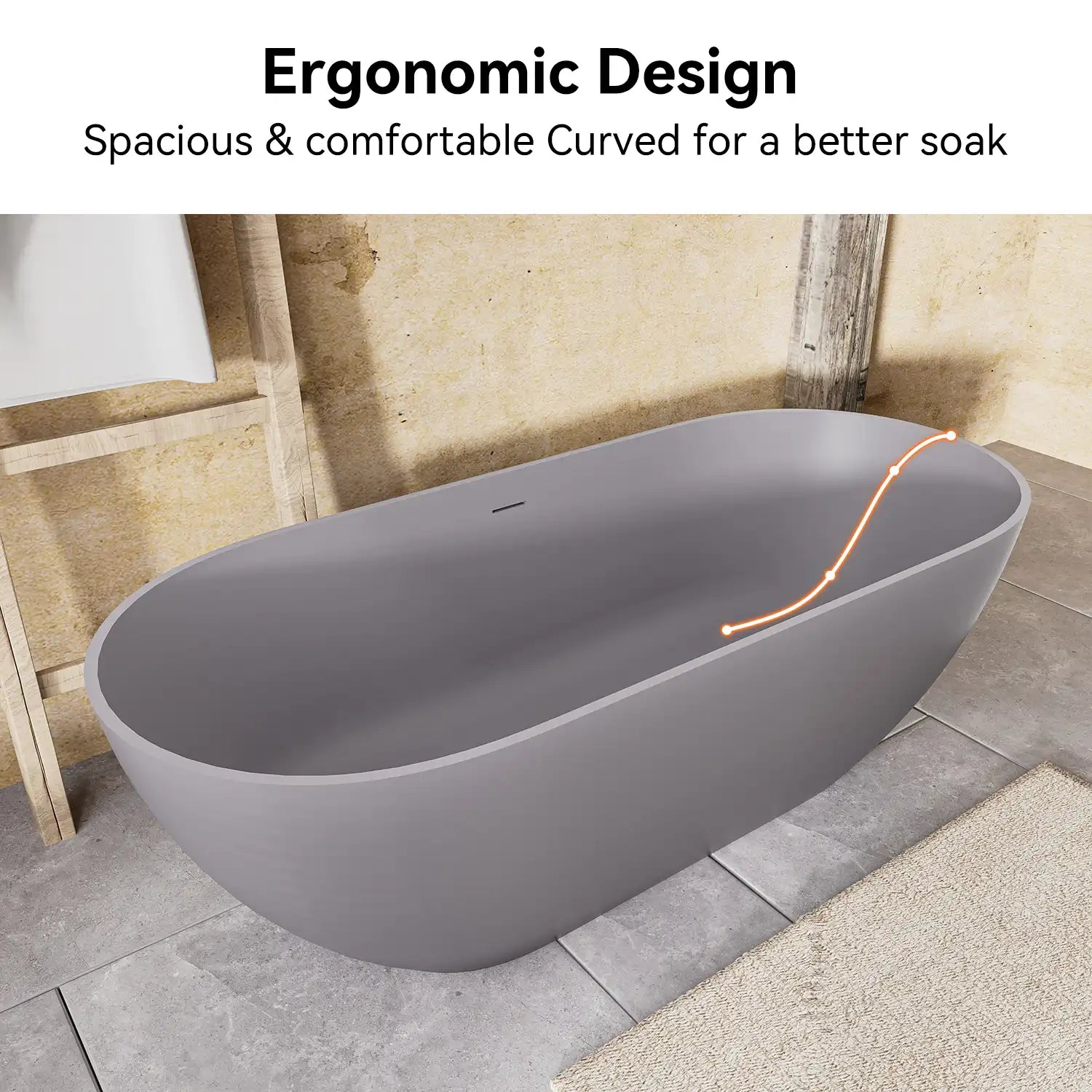Table of Contents
- What is an alcove bathtub?
- Alcove Tub Size Guide
- Materials Compared: Pros & Cons
- Pros and Cons of Alcove Bathtubs
- Typical Installation Process
- Cleaning & Maintenance Tips
- Who Should Choose an Alcove Bathtub?
- How to Know If Your Bathroom Fits an Alcove Tub
- Alcove vs Freestanding Tub: Key Differences
- Alternatives We Offer at Ace Decor
- FAQ: Alcove Bathtubs
- Final Thoughts
- Related Articles
Have you ever been in the midst of renovating or scrolling through Pinterest and come across the term “alcove bathtub” and wondered — what exactly is it? Chances are you’ve already used one: a rectangular alcove bathtub tucked between three walls, often with a shower overhead.
Alcove bathtubs are extremely popular in North American homes thanks to their space-saving design, affordability, and flexibility. But are they the best fit for your bathroom remodel? In this guide, we’ll explore everything from standard alcove bathtub sizes and materials, to installation, costs, and how alcove bathtubs compare with freestanding tubs.
At Ace Decor, we don’t currently sell alcove bathtubs, but we believe an informed choice starts with knowing all the options. Let’s dive in.

What Is an Alcove Bathtub?
An alcove bathtub is installed flush against three surrounding walls, leaving only one finished side exposed. This design makes alcove bathtubs perfect for compact bathrooms, especially when paired with a showerhead. Compared to freestanding tubs, an alcove bathtub saves space, reduces installation costs, and allows for built-in shelving or shower surrounds.
Freestanding tubs take up more floor space and require flexibility with plumbing; alcove tubs are all about functionality. With their uniform profile and low-set design, these are perfect for fast renovations and simple maintenance.
Alcove Bathtub Size Guide
When choosing an alcove bathtub, getting the right measurements is essential to ensure a proper fit in your bathroom. Standard alcove bathtub sizes typically range from 54 to 72 inches in length, 30 to 36 inches in width, and 14 to 20 inches in depth. Smaller alcove bathtubs are ideal for compact bathrooms, while larger alcove soaking bathtubs offer extra depth for a more comfortable bathing experience.
The most common alcove bathtub dimensions and rough openings are shown in the table below.
| Tub Size (inches) | Width | Soaking Depth | Room Fit Recommendation | Notes |
|---|---|---|---|---|
| 60 x 30 x 14 | 30" | 14" | Standard 5' x 8' bathroom | Most common U.S. standard size |
| 60 x 32 x 16 | 32" | 16" | Slightly roomier 5.5' x 8' layout | Better comfort without more space |
| 66 x 32 x 18 | 32" | 18" | 6' x 9'+ bathrooms | Suitable for taller users |
Pro Tip: Always confirm the drain orientation (left, right, or center) before purchasing an alcove bathtub, since this detail affects installation.
Alcove Bathtub Materials Compared
The material you choose for your alcove bathtub will impact not only its appearance and comfort, but also its durability, weight, and maintenance needs. Different alcove bathtub materials come with distinct pros and cons:
| Material | Pros | Cons | Price Range |
|---|---|---|---|
| Acrylic | Lightweight, retains heat well, easy to clean | Can scratch over time | $300–$800 |
| Porcelain-Enameled Steel | Durable, shiny finish, timeless aesthetic | Cold to the touch, can chip | $400–$1,000 |
| Fiberglass | Affordable, quick to install, lightweight | Less durable, prone to discoloration | $200–$500 |
| Cast Iron | Highly durable, retains heat, classic appeal | Heavy, expensive, harder to install | $800–$1,500+ |
For long-term performance, enameled steel and cast iron alcove bathtubs provide superior durability and heat retention. If you’re remodeling on a budget, fiberglass or acrylic are practical, lightweight options.

Alcove Bathtubs: Pros and Cons
Before deciding on an alcove bathtub, it’s important to weigh the advantages and drawbacks.
Pros of Alcove Bathtubs:
-
Efficient use of space: An alcove bathtub fits neatly into small bathrooms or compact layouts, making it a smart choice for urban homes.
-
Affordable cost: Typically less expensive than freestanding or drop-in bathtubs, an alcove bathtub offers great value.
-
Family-friendly design: The three-wall enclosure makes the alcove bathtub with shower combo ideal for children and pets, providing a safe and practical bathing area.
-
Easy replacement & installation: Especially convenient when swapping out an old alcove bathtub.
Cons of Alcove Bathtubs:
-
Limited design flexibility: Must be installed between three walls, which can restrict layout options.
-
Shallower soak: Standard alcove bathtub sizes often provide less depth compared to freestanding soaking tubs.
-
Hard-to-clean corners: The edges around an alcove bathtub may accumulate grime if caulking wears out.
-
Basic aesthetic: Function-focused, an alcove bathtub may not provide the same visual impact as a freestanding tub.
Typical Alcove Bathtub Installation Process
Many homeowners consider installing an alcove bathtub as a DIY project, but proper waterproofing and structural support are critical—so hiring a professional is usually recommended. Here’s how a typical alcove bathtub installation works:
- Demolition & Prep: Remove the old tub, clear debris, and prepare the surrounding wall studs for the new alcove bathtub.
- Framing Support: Install ledger boards or framing to support the weight of the alcove bathtub.
- Plumbing Prep: Rough-in the drain, overflow, and water supply lines according to the alcove bathtub’s specifications.
- Placing the Tub: Set the new alcove bathtub into the enclosure, ensure it’s level, and check the fit.
- Securing the Tub: Fasten the flange to the studs, then seal edges with waterproof tape or caulk.
-
Wall Finishing: Add cement board or tile backer, then finish with tile or wall panels.

Note: Always use a waterproof barrier behind the walls to prevent mold and moisture damage around your alcove bathtub.
Alcove Bathtub Cleaning & Maintenance Tips
An alcove bathtub is fairly easy to maintain, but consistent care is key to preventing long-term damage. Here are a few tips to keep your alcove bathtub in top condition:
- Use gentle cleaners: Choose mild, chemically resistant products. Avoid harsh scrubbing agents that can damage acrylic or fiberglass alcove bathtubs.
- Re-caulk regularly: Reseal the edges every 2–3 years to prevent mildew, leaks, and water damage around the alcove bathtub.
- Improve access: Adding a handheld showerhead makes it easier to clean hard-to-reach corners of your alcove bathtub.
- Avoid suction bathmats: On acrylic alcove bathtubs, suction-cup mats can leave stains or damage the finish.
Pro Tip: Wipe down your alcove bathtub after each use to reduce soap scum and water spots—simple daily care can dramatically extend its lifespan.

Who Should Pick an Alcove Bathtub?
An alcove bathtub is an excellent option for:
-
Families who need a dual-purpose shower/tub space: An alcove bathtub with shower combo is safe, practical, and perfect for children or pets.
-
Apartment or condo residents with limited bathroom space: Standard alcove bathtub sizes (5′–6′) fit well in compact bathrooms.
-
Homeowners seeking affordability and function: An alcove bathtub delivers a reliable, no-frills bathing experience at a lower cost.
On the other hand, an alcove bathtub may not be the best choice for:
-
Those who want a deep soaking experience: A freestanding or drop-in tub often offers greater depth than most alcove bathtubs.
-
Bathrooms with open layouts or central floor plumbing: These spaces are better suited to freestanding tubs.
-
Designers seeking a luxury statement piece: For large bathrooms, a freestanding or corner tub may be more visually striking than an alcove bathtub.
How Do I Know If an Alcove Bathtub Will Fit in My Bathroom?
Before buying an alcove bathtub, check the following:
- Already have a three-wall recess in your bathroom?
- Is there at least 60 inches of wall space (the standard alcove bathtub size)?
- Do you have any plumbing that runs under or along that back wall?
If you answered “yes” to most of these, then a new or replacement alcove bathtub will likely be a simple and cost-effective solution for your bathroom remodel. Smaller bathrooms can accommodat
Alcove vs Freestanding Tub: Major Differences
| Feature | Alcove Tub | Freestanding Tub |
|---|---|---|
| Space Requirement | Minimal, fits tight spaces | Requires more floor space |
| Style Impact | Functional, simple | Sculptural, visually striking |
| Cost (Typical) | $300–$900 + install | $700–$3,000+ + more complex install |
| Installation | Easier if rough-in exists | Requires new plumbing in many cases |
| Cleaning Access | Three sides enclosed | Full access around entire tub |
Other Options We Offer at Ace Decor
Ace Decor does not carry alcove bathtubs, but we do offer quality freestanding bathtubs that will enhance your bath experience:
Solid Surface Freestanding Tubs
- Made from durable man-made stone
- Matte finish, sculptural design
- Excellent heat retention
- Perfect for master bath or inspired by spa room
Acrylic Freestanding Tubs
- Lightweight and budget-friendly
- Glossy modern finish
- Quick install, easy maintenance
- Great for any guest bathroom or a remodeling
| Tub Type | Material | Best For | Look & Feel |
|---|---|---|---|
| Solid Surface | Man-made stone | Luxury bathrooms, long soaks | Matte, sculptural |
| Acrylic Freestanding | Acrylic resin | Quick installs, lighter floors | Glossy, modern |
FAQ: Alcove Bathtubs
Q1: Can I change to a freestanding tub in place of an alcove tub?
Yes — but generally you need to re-route plumbing, specifically the drain. Ensure that the design of your bathroom supports open-space installation.
Q2: Are alcove tubs outdated?
Not at all. Still, they remain a staple in a lot of home construction and renovation. Not design showstoppers, then, but their utility is written in their favor.
Q3: What is the best small tub?
Alcove tubs are designed specifically to maximize limited space. But if you have the room, a small freestanding tub can add a touch of luxury.
Q4: Can Alcove tubs be used without a shower?
Yes, though they are most commonly used for showers. Others — as we see with the new owners who turn tubs into showers or forbiddingly skinny claw-foot versions — keep their soaker tubs limited to occasional use purely for soaking, paired with built-in tile surrounds.
Q5: What are the difference between alcove and skirted tubs?
All alcove bathtubs are skirted (they have a finished front), but not all skirted tubs are really alcove tubs. Alcove bathtubs are the only type that fit between three walls.
Final Thoughts
Alcove bathtubs are still a practical, sensible option for a lot of homeowners—especially of the budget-friendly and ergonomically-efficient varieties, and for small bathrooms. They won't have quite the same dramatic effect as free standing options, but they win in practicality and price.
Fortunately, if you're finding alcove tubs a little bit "meh,” there are no shortage of other beautiful and practical choices available.
Ready to discover the tub that's right for you? Explore our full range of freestanding baths in every shape, material, and size to find the ideal fit for your home.
Related Articles
Looking to explore more smart, stylish bath solutions? Here are a few related reads that can help you design with confidence—no matter your layout or tub preference.
- "How to Clean a Dirty Bathtub Without Scrubbing in 15 Minutes"
- "5 Rookie Mistakes with Luxury Freestanding Bathtubs "
- "Elderly-Friendly and Luxurious: Exploring the Versatility of Walk-in Tubs with Jets and Showers for Every Age"
- "Why Your Bathroom Layout is Begging for a Corner Bathtub (And How to Listen)"
- "How to Care for Your Stone Resin Bathtub & Keep It Looking Brand New"


